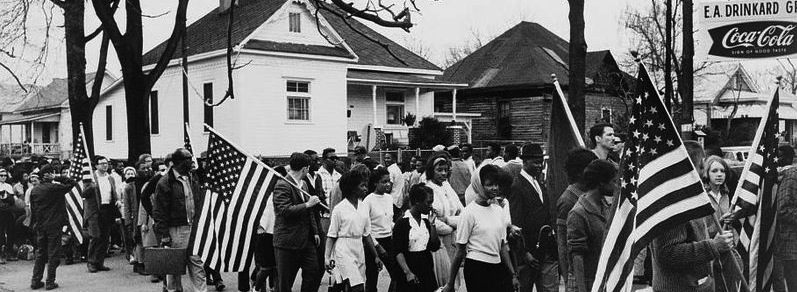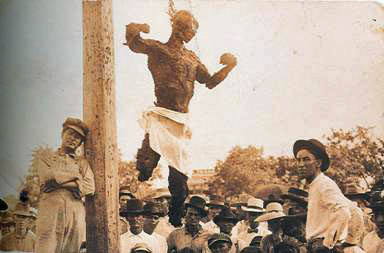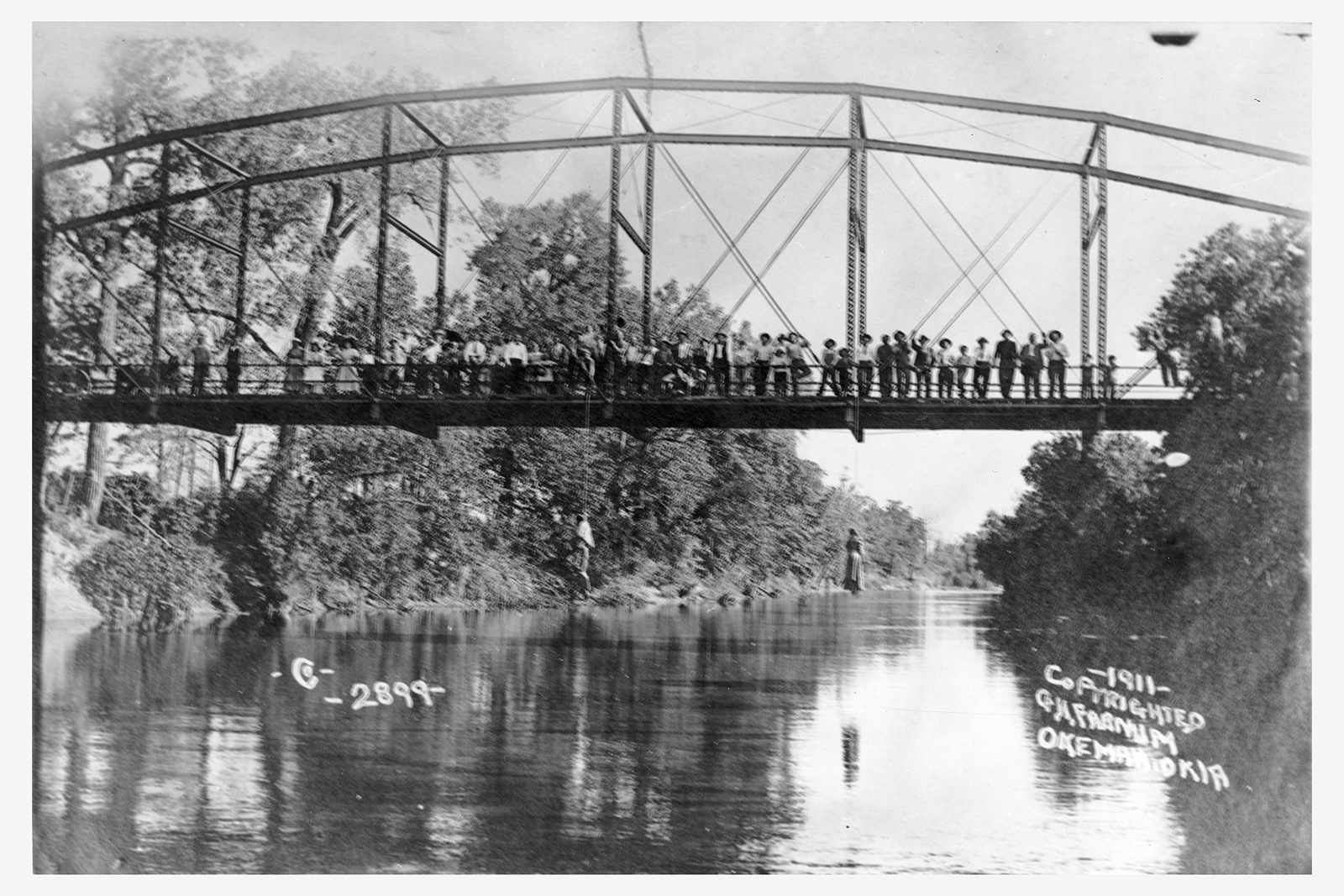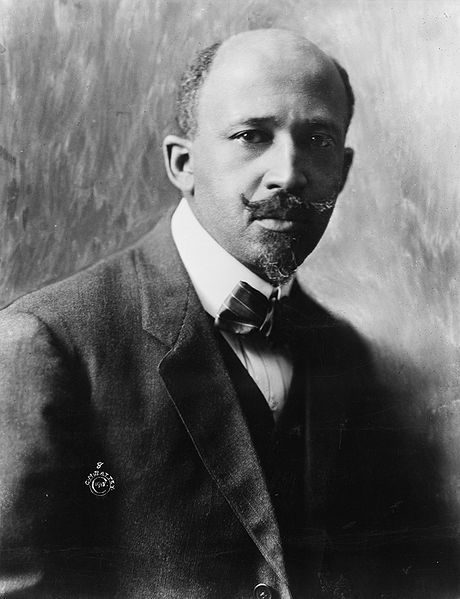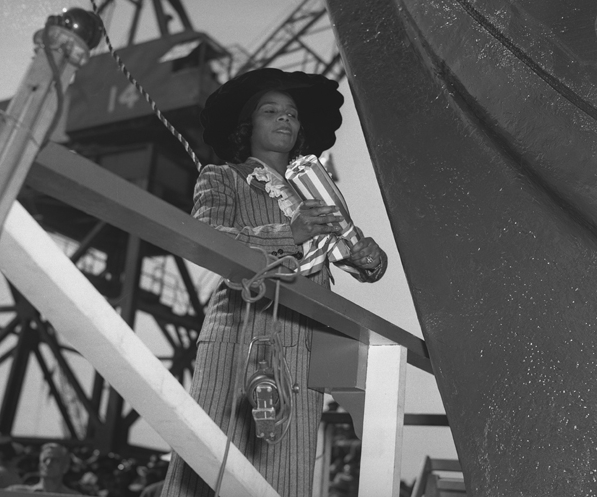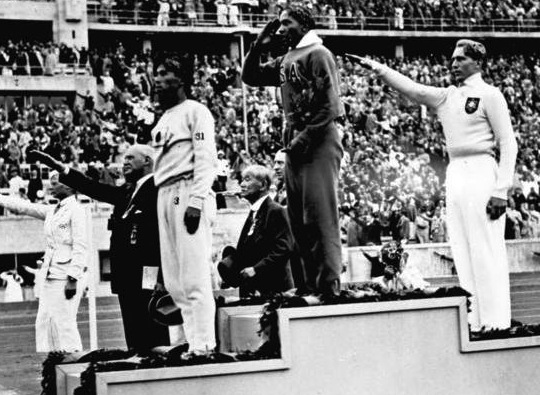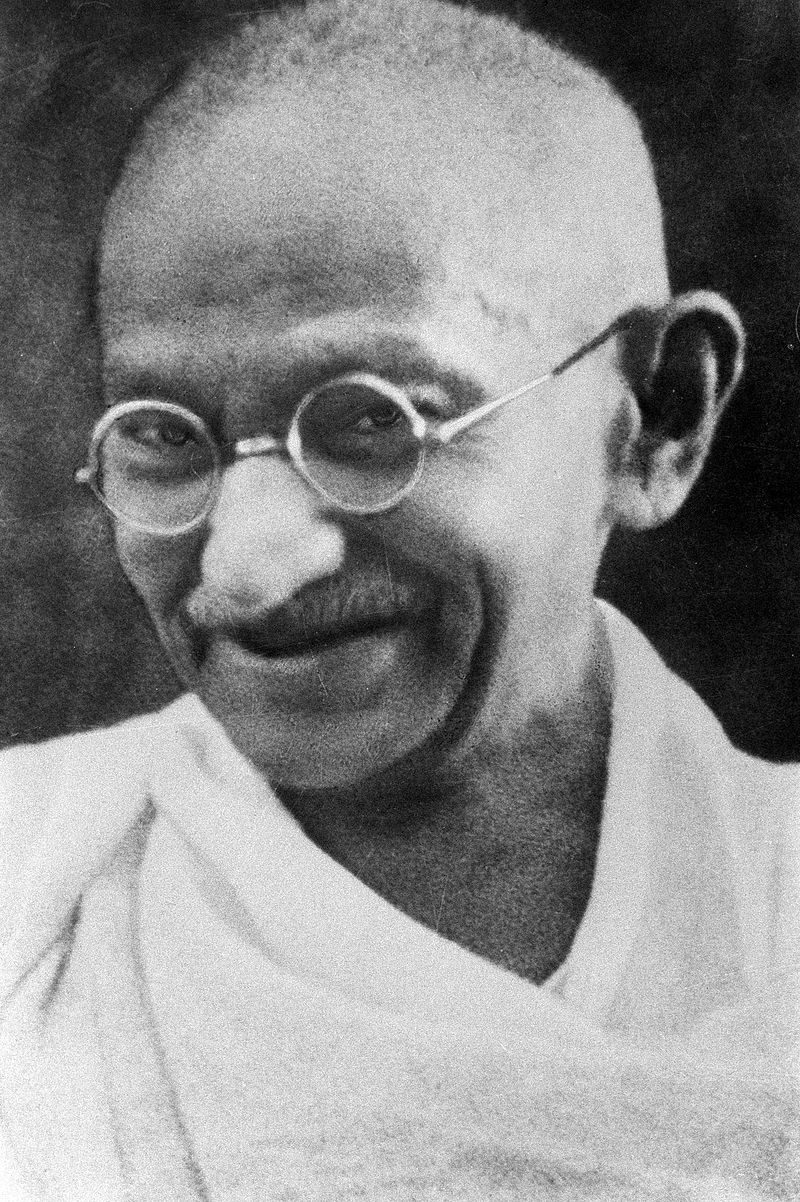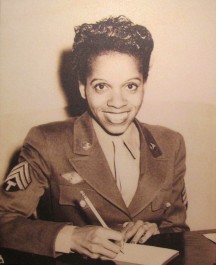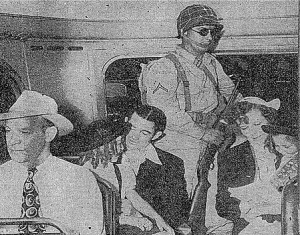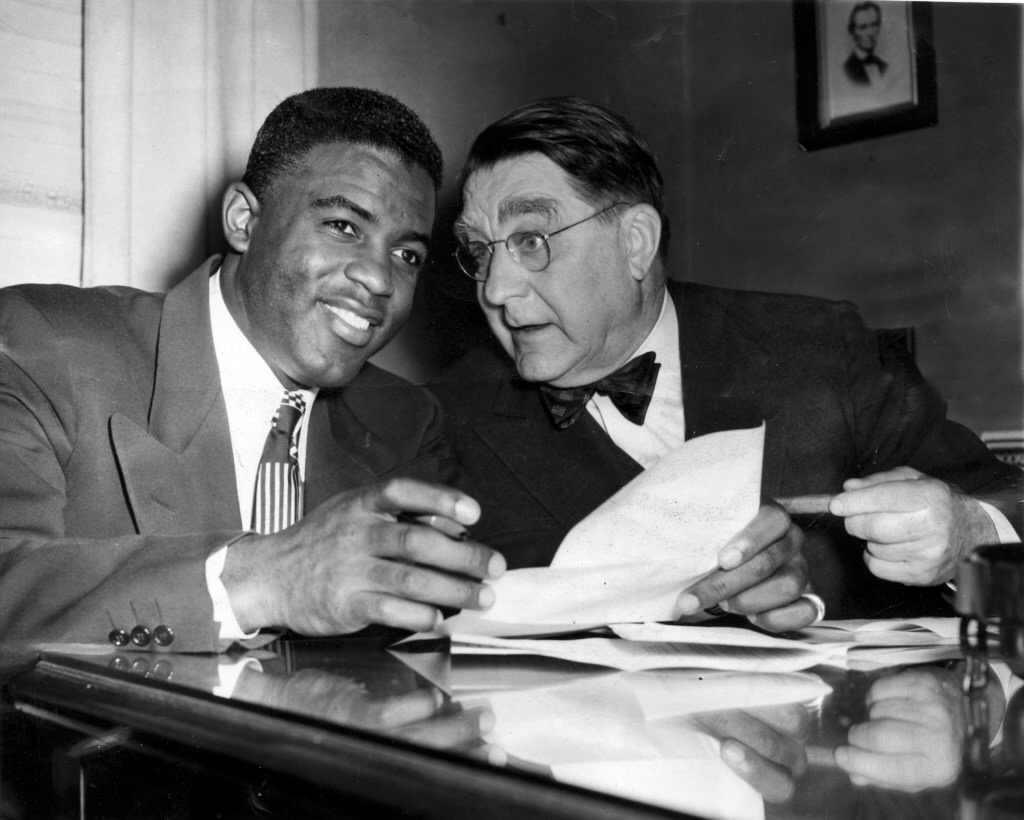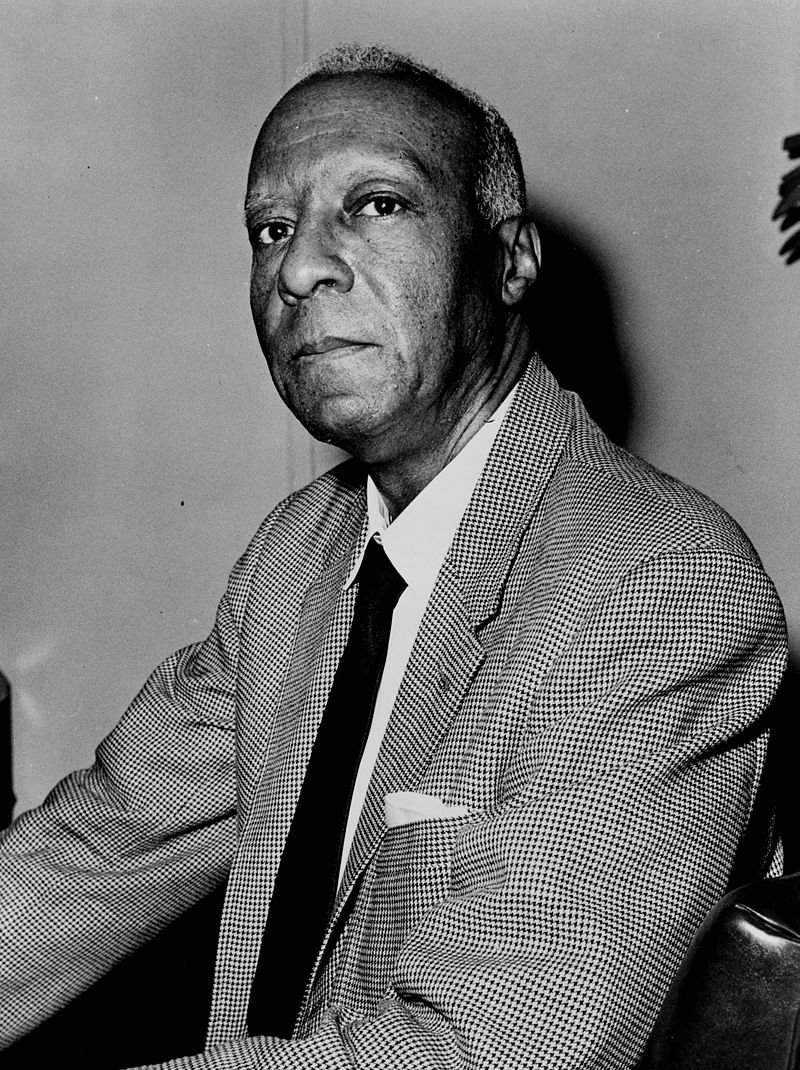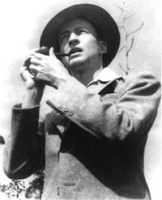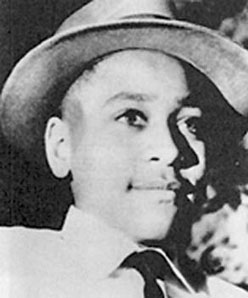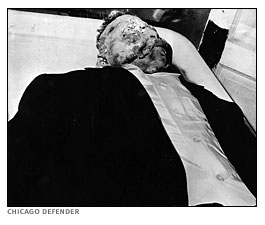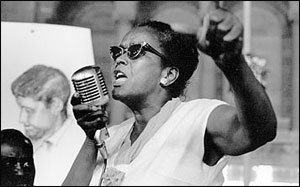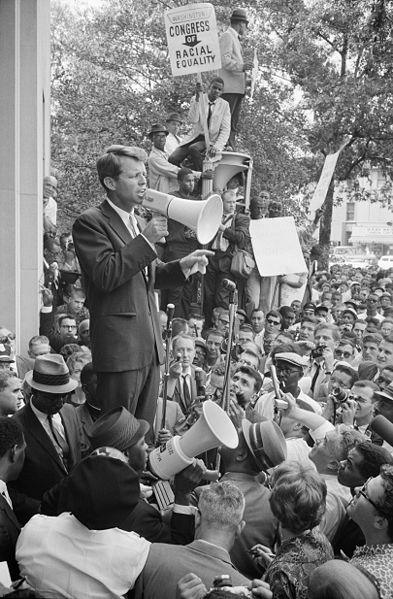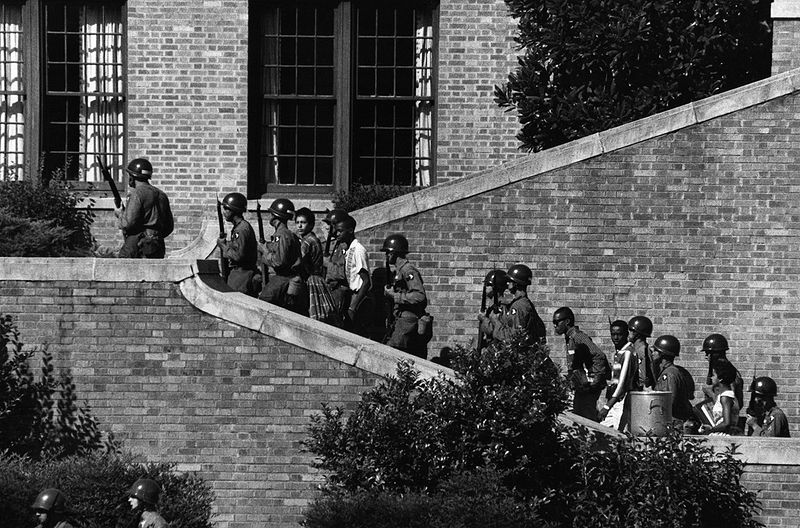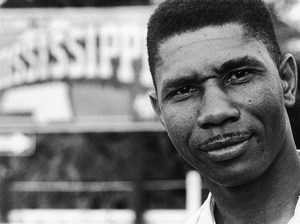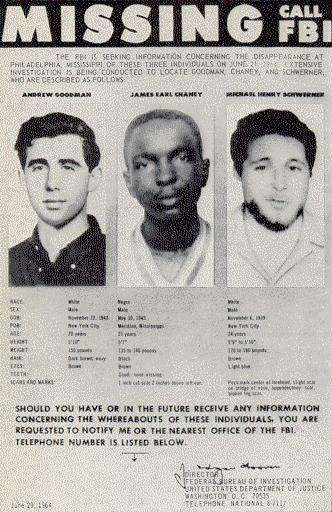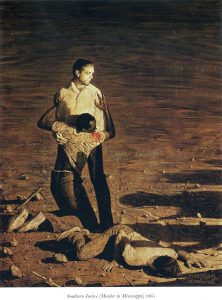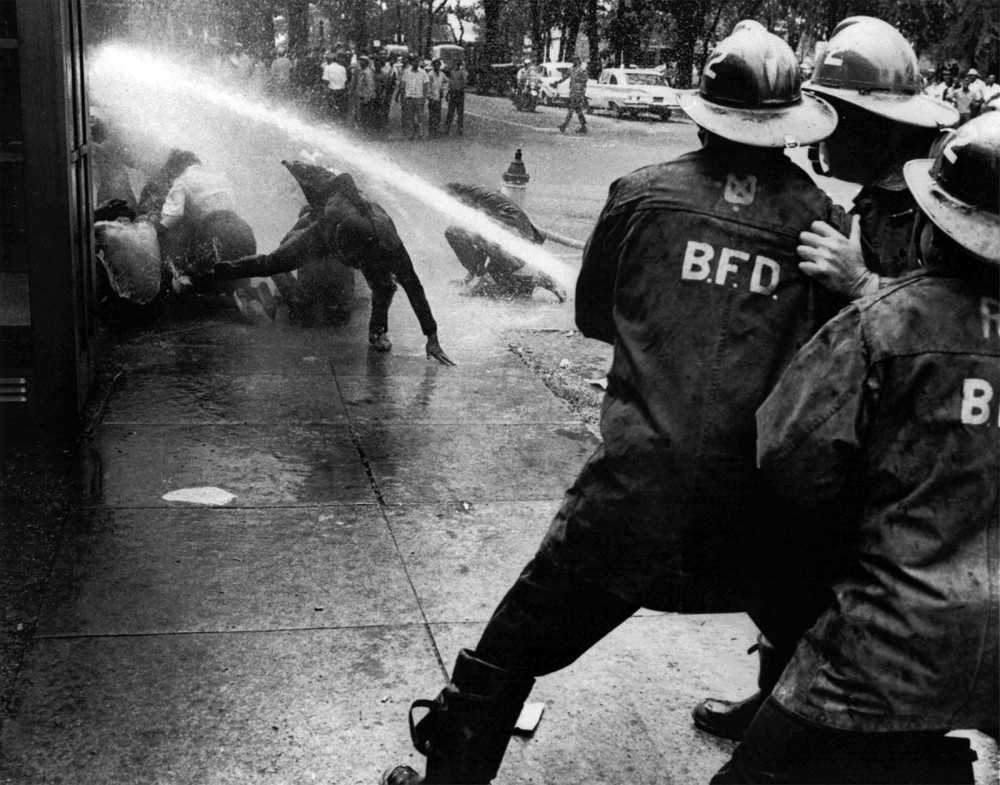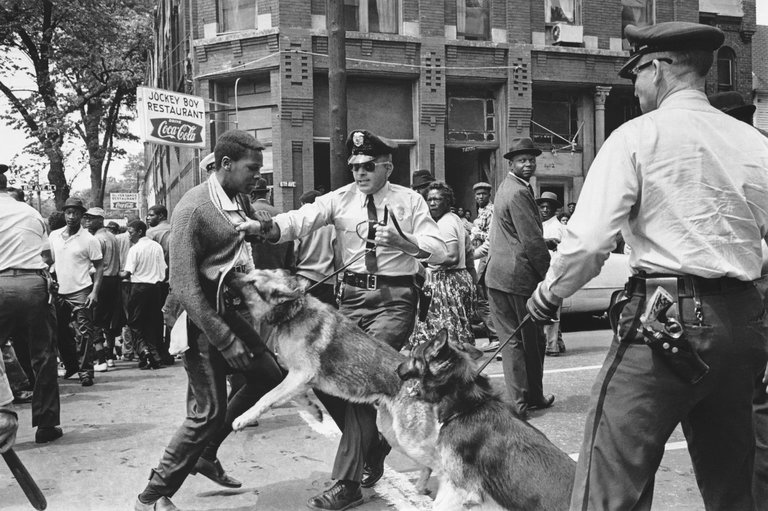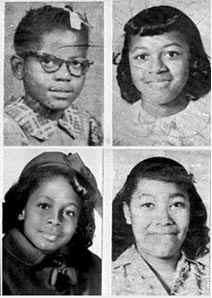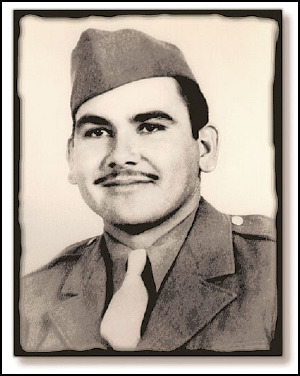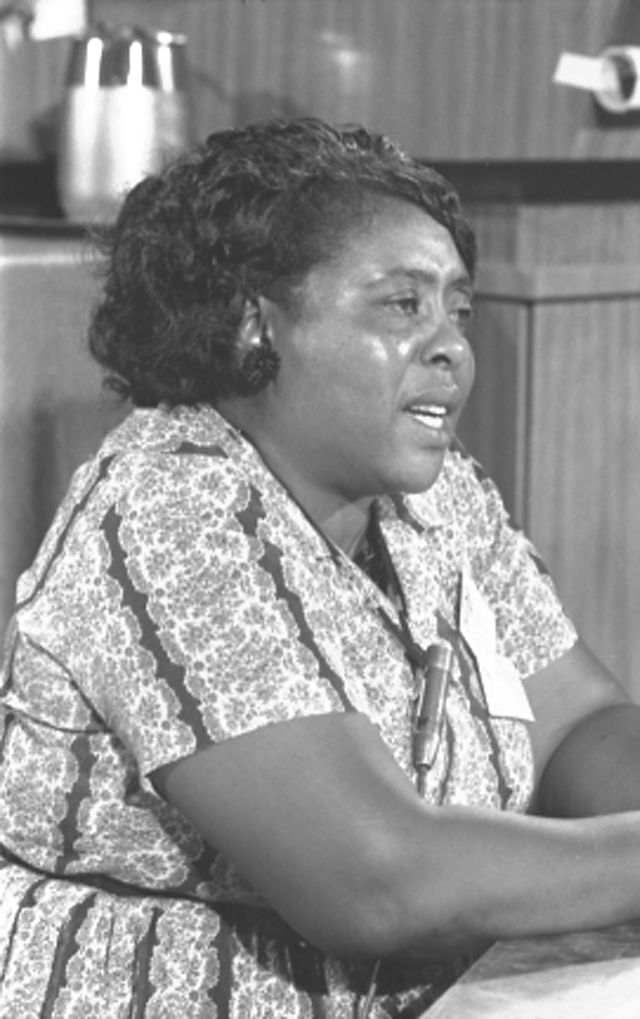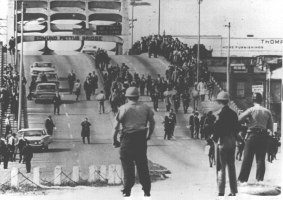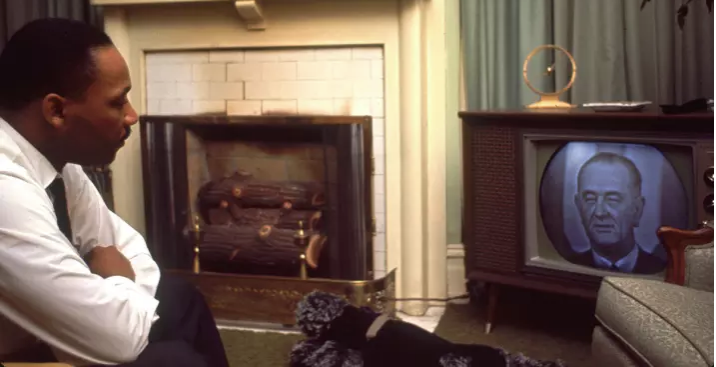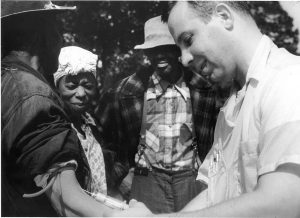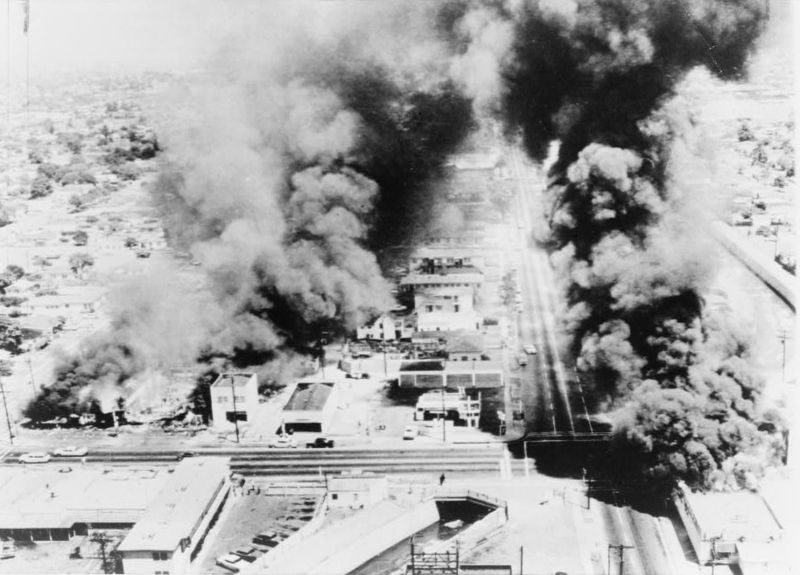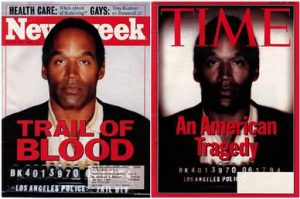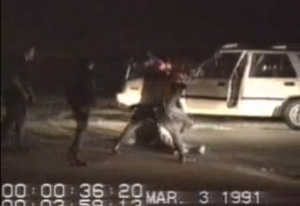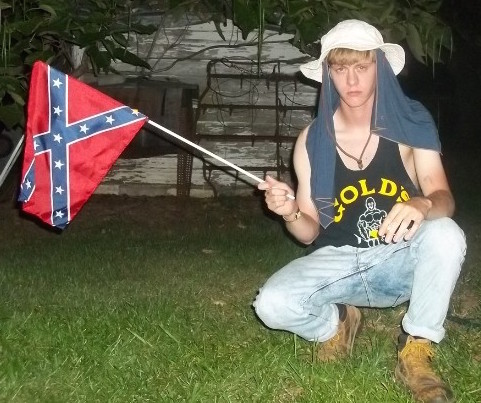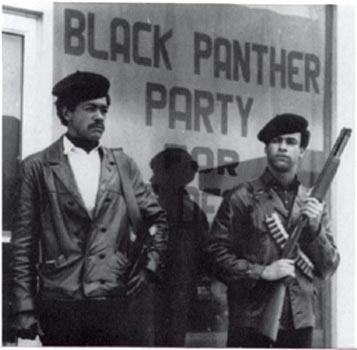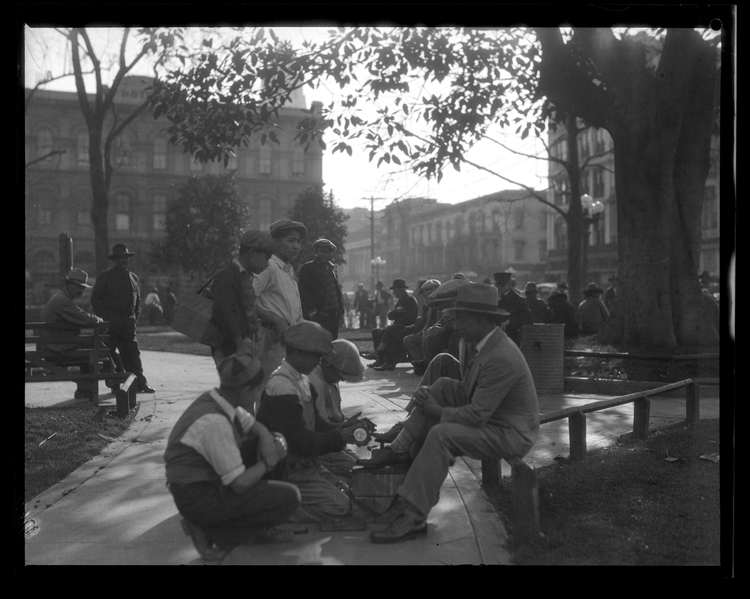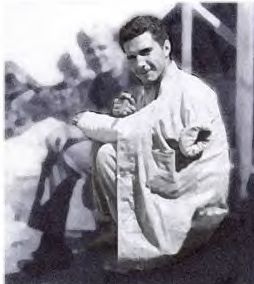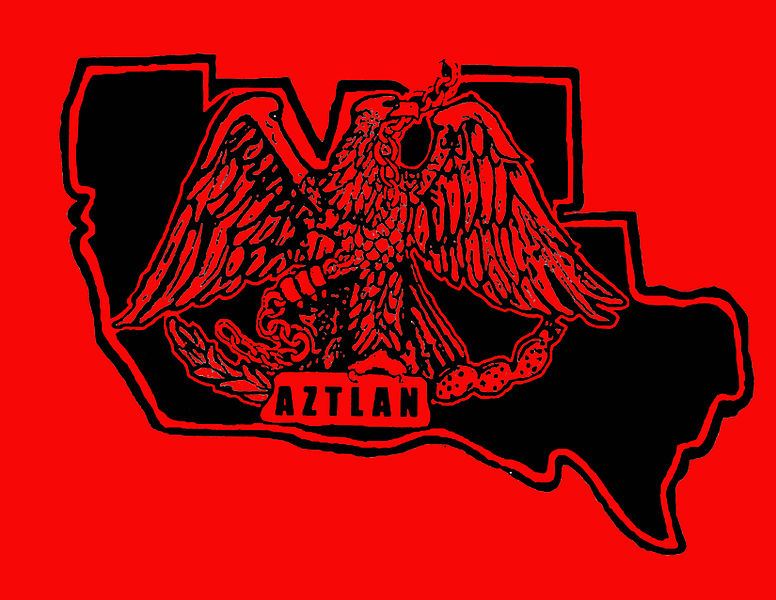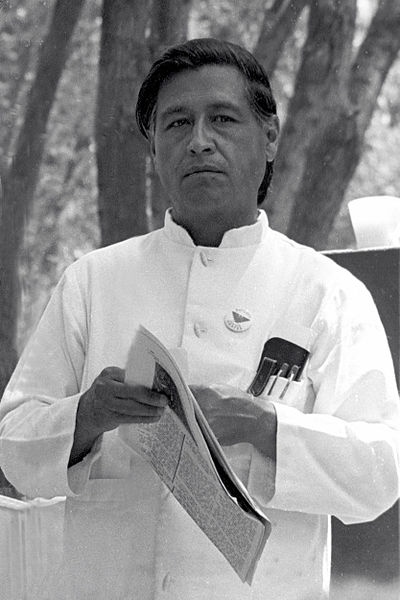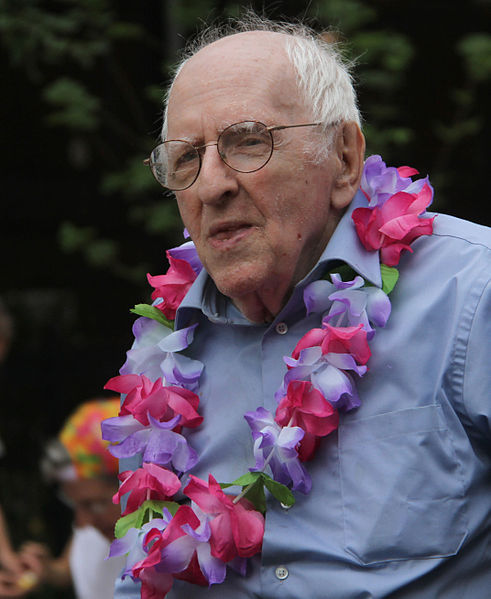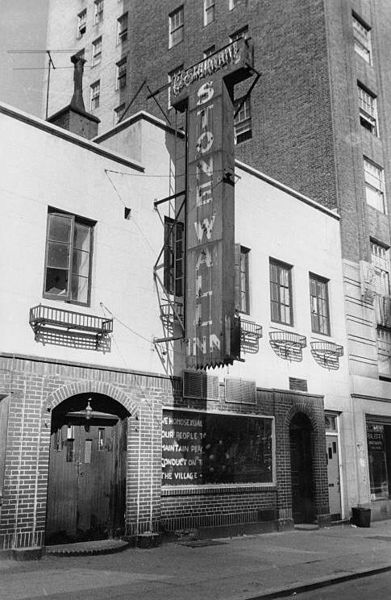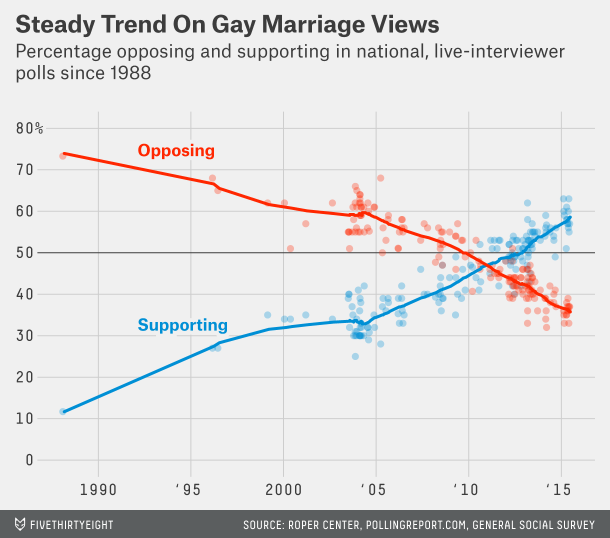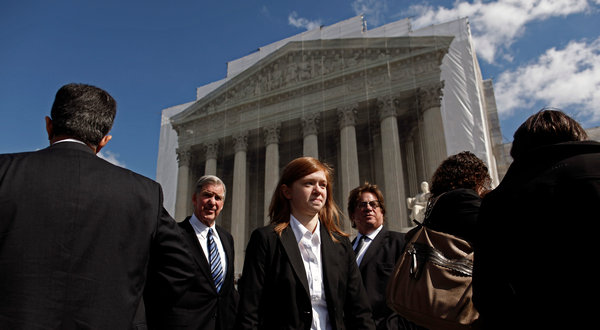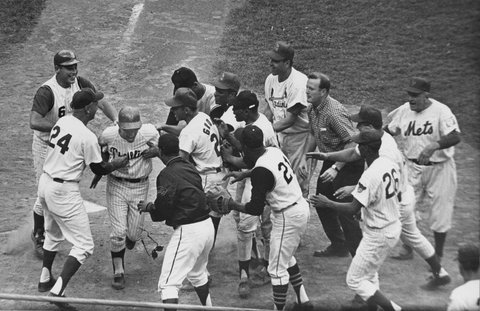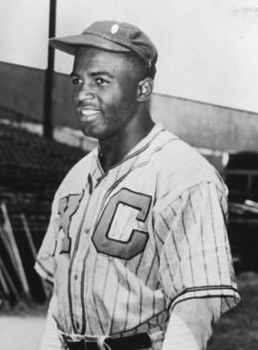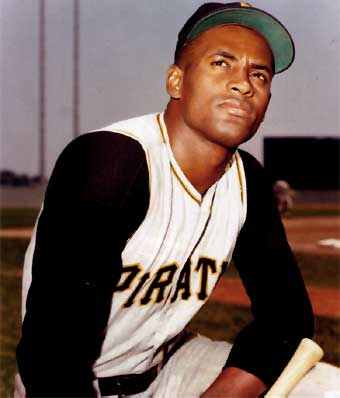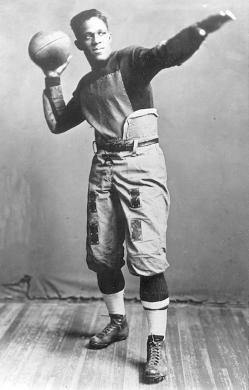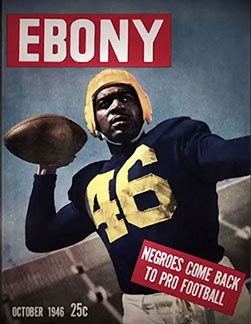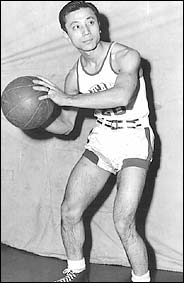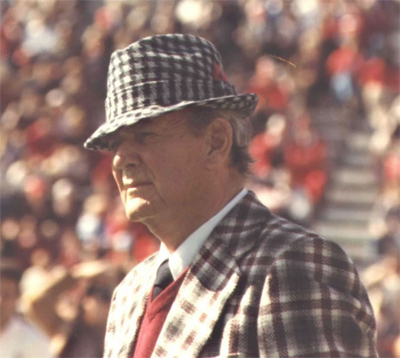“Injustice anywhere is a threat to justice everywhere. We are…tied in a single garment of destiny.” — Reverend Dr. Martin Luther King, Jr.
America didn’t invent racism, but its combination of democratic ideals, slavery, and diverse population make race relations more combustible in the U.S. than elsewhere. Racism is America’s “original sin” and original sins aren’t cleansed overnight. While civil rights movements have addressed these relations throughout American history, the Civil Rights Movement in capital letters generally refers to the Montgomery-to-Memphis period from 1954-1968 — from Brown v. Board and the Montgomery Bus Boycott in the mid-’50s to Martin Luther King’s assassination in Memphis in ’68. That was a 15-year stretch of grassroots activism and stellar leadership among Blacks and Hispanics that, combined with unprecedented cooperation among a critical balance of Whites, allowed for progress on the legal status of minorities in America, in effect winning them full citizenship. It was the most productive period since the Civil War, called Second Reconstruction because it dealt with many of the same issues that post-Civil War Reconstruction (1865-77) failed to resolve.
We’ll broaden the scope chronologically, tracing back to the early 20th century, then pick up the story in earnest during the New Deal and World War II, look at how black civil rights impacted movements among other groups, and conclude by examining the hot-button topic of affirmative action. Along the way, we’ll unpack more details concerning the famous period from 1954-68.
Early Civil Rights
First, some background. After southern Democrats stopped civil rights in their tracks during Reconstruction, and the Supreme Court went along with weakening the Fourteenth (1868) and Fifteenth Amendments (1870), progress stalled in the late 19th and early 20th centuries. The result was a tragic combination of disenfranchisement, segregation, false imprisonments/convict lease labor, burnings, lynchings, and poverty. It was a reverse revolution given some of the hopes raised by the Civil War and early Reconstruction. Black lynchings and ritual burnings attracted big crowds, who gathered around the corpse afterward to pose for photos. As we saw in Chapter 7, witnesses sent friends and relatives postcards of photos like the one on the left. Sometimes, as in the case of Mississippian Will Echols, the victim was made to kiss the Confederate flag before being killed. Victims included Blacks and Hispanics suspected of crimes or those deemed too successful, as was the case in Thomas Moss’ 1892 lynching in Memphis, that inspired his friend, suffragist Ida B. Wells, to pursue a career in activism. During the Bandit War along the Mexican border between 1910-1920, white Texans hanged, burned, or mutilated several non-combatant Hispanics during La Matanza (“The Slaughter”). Over 500 Mexican Americans were lynched between 1848 and 1928 — some by Texas Rangers, others by mobs.
It’s been said, with some accuracy, that while the North won the Civil War the South won Reconstruction. While true to a point, it ignores the racism African Americans experienced in the North and West, including after the Great Migration to industrial cities during and after World War I. If it had been otherwise then southern racism wouldn’t have been a problem because Blacks could’ve just followed a red carpet north. Instead, what was red was the blood running into street drains when soldiers returned home from WWI to find Blacks and Mexicans living in their neighborhoods and working in their factories. Thus, 1919 became known as Red Summer, as we learned about in our chapter on the Great War (6). By the 1920s, Ku Klux Klan chapters were entrenched across the North.
Early black activists disagreed over how to best rectify the situation. W.E.B. Du Bois wanted to use the courts to beef up the Fourteenth and Fifteenth Amendments, to secure basic rights of citizenship and voting. This push for equality was known as the Niagara Movement, named for the “mighty current of change” that swept over Niagara Falls. Du Bois was a co-founder of the NAACP, the National Association for the Advancement of Colored People, and advocated restoring African pride, solidarity, and culture globally through Pan-Africanism. Booker T. Washington argued for a more gradualist approach advocating that Blacks get up to speed in segregated vocational colleges before pushing for full equality. His Atlanta Compromise acquiesced (temporarily) in white political domination in exchange for education funding and guarantee of due process of law. Marcus Garvey shared Du Bois’ belief in Pan-Africanism and promoted black business ownership. These strategies weren’t mutually exclusive, but two of them – using the Constitution and promoting education – combined as important strategies of the modern Civil Rights Movement a generation later.
While the civil rights movement is most famously associated with black America, their tactics and spirit carried over into liberation movements among all oppressed Americans. As of the mid-20th century, that included pretty much anyone who didn’t fit the traditional WASP mold, depending on how one defines oppression. If your definition goes beyond outright violent harassment to include not having political equality, equal pay, career choice, access to capital or positions of power, then it included the vast majority of society. That was largely due to the inertia of tradition rather than the inherent evil of white males or Gentiles. Most people don’t ask fundamental questions about their society. Many Whites irrationally subscribed to a zero-sum game, whereby any gain in the dignity or status of minorities meant a corresponding drop in their own stature. Over and over again in the 1960s, we heard congressmen equate black citizenship with white slavery or complain that minorities seeking equality wanted “special treatment” (more below). Among other economic and cultural factors, one reason some blue-collar Whites abandoned the Democratic Party was their belief that, if Democrats embraced civil rights, they were abandoning white workers. Others subscribed to the racist biology of eugenics we covered in Chapters 4 and 10. Still others were just ignorant or mean, as is always the case with some people of all races.
Likewise, when things started to change, people of various races and backgrounds contributed to making America a more democratic society. Eleanor Roosevelt, for instance, was white, and reared in many of the typical attitudes of the patrician class, including intolerance of Jews and Blacks. She changed as an adult, though, often to the embarrassment of her husband Franklin. She publicly supported anti-lynching laws and she resigned from the Daughters of the American Revolution after their refusal to host black singer Marian Anderson in Constitution Hall. In 1939, the NAACP arranged for the contralto to sing in front of the Lincoln Memorial. President Roosevelt was skeptical about allowing Anderson to perform at the federal monument, especially since a recent KKK rally there had degenerated into a violent clash. Pressured by Eleanor, FDR gave the concert the go-ahead and 75k fans, interspersed with some protestors, heard Anderson sing a famous rendition of “My Country Tis’ of Thee,” highlighted by the line from every mountainside, let freedom ring (the song’s melody comes from England’s national anthem “God Save the Queen”). A quarter-century later, standing in that very spot, Reverend Dr. Martin Luther King, Jr. paid homage, speaking those verses during his “I Have a Dream” speech. After Franklin’s death, NAACP board member Eleanor Roosevelt advocated tirelessly for civil rights, encouraging Harry Truman to work with the NAACP, helping to organize the Montgomery Bus Boycott, promoting anti-lynching laws, and trying to desegregate hospitals.
You could see other subtle changes in the 1930s. Many white boxing fans rooted for the “Brown Bomber” Joe Louis over his Nazi counterpart Max Schmelling in their bouts at Yankee Stadium. It’s unlikely American audiences would have done the same for heavyweight Jack Johnson in the 1910s, even against a Nazi. As an indicator of how conflicted America felt about race in the 1930s, New York gave Olympian Jesse Owens a ticker-tape homecoming parade upon his return from the Berlin Olympics in 1936. Yet, when he went to his own reception at the Waldorf-Astoria he had to ride the freight elevator. While much has been made of Hitler snubbing Owens and refusing to shake his hand (he quit shaking all hands after the first day to avoid such situations), Franklin Roosevelt snubbed Owens as well. Only white medalists were invited to the White House to avoid alienating southern Democrats. For pro-labor Democrats to stay united during the Depression, northern progressives had to put aside their differences with “Boll Weevil” southern Democrats and acquiesce in Jim Crow to secure passage of New Deal legislation, though they integrated some programs like the Civilian Conservation Corps (CCC). Jim Crow and Juan Crow were pretty much the way it was throughout America anyway, North and South. The most FDR could do was outlaw discrimination in public projects and, later, in the defense industry. Even that was seen as too much by many, but Roosevelt’s top priorities were to stimulate the economy and keep weapons moving to the battlefield during WWII.
World War II
World War II ignited the Civil Rights movement more than the New Deal did. Not only did minority troops fight in combat (nothing new), but Americans also looked hard-core racism in the eye when fighting Japan and Germany and didn’t like what they saw. Japan’s racially justified brutalization of other Asians and the horrific Jewish Holocaust made some, not all, Americans rethink their own racism. Minority soldiers who fought in the war were also less likely to accept America’s apartheid-like system when they returned. Josh White’s “Uncle Sam Says” protested the hypocrisy of asking people to fight for democracy abroad while denying their rights at home (YT). Many of the half-million Latinos who fought overseas began to fight back against segregationist policies, such as the protests of Medal of Honor winner Macario Garcia in Texas. Veteran Dr. Hector P. Garcia organized the American GI Forum to protest discrimination in the distribution of veteran benefits and the group morphed into a broader civil rights organization.
Black veteran/actor/singer Harry Belafonte said, “We came back from this war having expectations, and finding that there were none to be harvested, were put upon to make a decision. We could accept the status quo as it was beginning to reveal itself with all these oppressive laws in place. Or as had begun to appear on the horizon, stimulated by something Mahatma Gandhi of India had done, we could start this quest for social change by confronting the state a little differently. Let’s do it nonviolently. Let’s use passive thinking applied to aggressive ideas, and perhaps we could overthrow the oppression by making it morally unacceptable.”
This tactic proved effective in Des Moines where protesters led by Edna Griffin forced Katz Drugstore to integrate its lunch counter through a case in the state’s supreme court in 1948. The passive approach took a variety of forms as we’ll see below, including marches led by Martin Luther King, Jr. and Caesar Chavez modeled on Gandhi’s 1930 Salt March. King also followed Gandhi’s American proxy, philosopher Richard Gregg. Nonviolent protests have been more effective, overall, than violent protests over the last century and have helped expand human rights considerably. However, passive resistance is only possible in societies like the U.S. and British Empire where the oppressors are reasonably civilized and don’t just execute protesters, as would happen in a more authoritarian state. In other words, protesters can only appeal to reason and justice if the authorities are somewhat reasonable to start with and share a general sense of justice. Indian independence finally happened when Britain’s government wanted out. The biggest challenge of Indian independence was maintaining peace between Muslims and Hindus, which led to the partition of Hindu India and Muslim (East and West) Pakistan.
The most important Supreme Court case regarding civil rights during WWII was seemingly a setback, but it provided hope nonetheless. In Korematsu v. the United States (1944), the Court ruled that Japanese internment camps were justified but only because of the wartime emergency and that, in the future, they would look skeptically at racially discriminatory laws. That was a bold claim for those that noticed, like the NAACP, because the U.S. had many such laws. After WWII, the U.S. phased out its exclusionary immigration policies toward Asians and granted citizenship to Asian Americans, overturning the precedent of the Supreme Court’s 1923 ruling on Indian American Bhagat Singh Thind that we saw in Chapter 7. The U.S. also granted independence to the Philippines in 1946, rejecting the sort of outright imperialism championed by Europeans in the centuries leading up to WWII.
As mentioned, FDR outlawed discrimination in the munitions industry, and he intervened to break up a Philadelphia transit strike protesting integration of their workforce that was slowing down commuters to the city’s naval shipyards (right). The national government hadn’t used force on behalf of Blacks since Reconstruction in the 1870s. By his third term in office, with the New Deal being phased out, FDR wasn’t as dependent on the support of southern Democrats and the NAACP pressured him to use black troops once the war broke out. In 1940, FDR ran against Republican Wendell Willkie and Willkie’s liberal stance on civil rights pressured Roosevelt to appear more progressive himself.
Many WWII soldiers in the Pacific had relations with Asian/Pacific Islander women or brought home APIA wives. That might not seem extraordinary today (if not, that’s a sign of progress) but, as of the 1940s, mixed-race relationships were illegal in many states. Yet, the willingness of some politicians to embrace civil rights legislation signaled light at the end of the tunnel. The Cold War also played a role after World War II. We learned in Chapter 14 about how the U.S. and USSR were competing among neutral nations to convince people that their way of life offered better prospects. As people in Latin America, Africa, the Middle East, and Asia wondered aloud why the U.S. itself hadn’t evolved into a true democracy, pressure built in Congress to enact reforms, unsuccessfully at first.
While Congress defeated anti-lynching bills, the number of incidents began to drop off in the mid-20th century. The KKK lynched Michael Donald in Alabama in 1981 and racists dragged to death James Byrd, Jr. outside Jasper, Texas in 1998. In both cases, state governments executed the white perpetrators. Lynching was a common form of vigilante justice employed on suspects of all races but, by the early 20th century, it was used mainly against minorities. Of the 4,743 lynchings in the U.S. between 1882 and 1968, nearly 73% of victims were black (Source: NAACP).
Integration of the military and pro sports in 1946-48 also helped lay the foundation for a brewing civil rights movement. Most important was Jackie Robinson’s integration of major league baseball, then the most popular sport in America. Calling him a “trial balloon,” Martin Luther King said of Robinson that “he was a sit-in’er before sit-ins and a freedom-rider before freedom rides.” Remarkably, before Robinson became a more outspoken civil rights leader in his own right, Gallup polls showed him as the second-most popular American behind Bing Crosby — ahead of Frank Sinatra, Eleanor Roosevelt, and Dwight Eisenhower. You can read more about influential sports and music stories like that of Robinson in the optional section at the end of the chapter.
Just as Frederick Douglass was influential in changing Abraham Lincoln’s mind about using black troops during the Civil War, ex-porter and union organizer A. Philip Randolph lobbied Franklin Roosevelt to integrate the munitions industry during the war, influenced Harry Truman’s decision to integrate the armed forces after WWII, and pioneered the idea of peaceful marches on Washington, D.C. among Blacks. Randolph helped organize the famous March on Washington featuring Martin Luther King in 1963. Truman’s enlightenment was key for the Civil Rights Movement and the evolution of the Democratic Party. He was outraged when a Charleston, South Carolina sheriff unjustly gauged out the eyes of decorated African-American veteran Isaac Woodard hours after his honorable discharge, especially after an all-white jury acquitted the guilty sheriff. How could the U.S. lead globally in the Cold War when it couldn’t deliver on democracy at home? Truman formed a commission to study civil rights and cast his lot with the NAACP. At their 1947 rally in Washington, D.C., he denounced discrimination against anyone based on “ancestry, religion, race, or color” and advocated equality for “all Americans.” Beforehand, the former Missouri Klansman warned his sister in a letter that he was about to give a speech that “momma isn’t gonna like.”
Even the Ku Klux Klan came in for criticism after the war. As we saw in Chapter 15, Hollywood portrayed the Klan negatively starting in the late 30s. That wasn’t surprising given that most of the industry’s leaders were Jewish, but it was a far cry from the Klan’s protagonist role in Birth of a Nation (1915). Two North Carolina writers won the Pulitzer Prize for Public Service in 1953 for criticizing the Klan and Lumbee Indians routed Klansmen in a forest shootout at the Battle of Hayes Pond in 1958. While the government still wasn’t as focused on far-right groups as far-left during the Cold War, indictments increased some by the mid-20th century. Folklorist Stetson Kennedy went underground and joined the Klan to write a sensationalized exposé, reporting on violence and ridiculing silly terms like “klavalier.” He passed his research onto the writers of the popular Adventures of Superman radio show, which depicted the caped hero taking on the “Clan of the Fiery Cross.” In the 1920s, the KKK wouldn’t have minded a mole infiltrating their group; they would’ve bragged about their violence and racism. Now, they were on the defensive, the state of Georgia revoked their charter, and membership dwindled. Little kids were rooting for Superman to defeat them. The Klan firebombed Kennedy’s Florida home and temporarily chased him out of the country.
White supremacist groups didn’t go away and are still around today but, after WWII, they no longer marched down Main Street USA in parades with the marching band, fire truck, and Kiwanis Club. That wasn’t all good news, though. When the Klan went underground in the form of the White Knights of the KKK, they grew increasingly violent in the mid-1960s. Here we see another, underrated way that WWII connected to the Civil Rights movement. Many black activists were veterans and some (e.g., NRA member and Negroes With Guns [1962] author Robert Williams in South Carolina) used their military background to train NAACP members on how to defend themselves. But, so too, many Klan members were veterans and used their knowledge of munitions to blow up black churches and homes in the mid-20th century.
Why Jury Duty Matters
The Supreme Court slowly but surely started to signal its cooperation on civil rights, which it had more or less slammed the door shut on in the late 19th century. Hispanics won an influential decision in Hernandez v. Texas (1954) that gave all minorities the right to sit on juries. The Court ruled jury duty as fundamental to equal protection under the law. Today most of us just complain about being called to jury duty, but ethnic groups lacking that fundamental right were unlikely to experience anything approximating justice. Women, moreover, couldn’t sit on juries in some states until the mid-1960s. One need look no further than a case involving the murder of a boy in Mississippi to see what a sick joke America’s legal system could be with all-white juries. The Emmett Till case gave the TV-watching part of the American public an up-close reminder that, despite being a relative beacon of hope in a hostile world, the United States had some skeletons of its own in the closet.
Emmett’s family was part of the Great Migration north, but they were back from Chicago visiting Mississippi relatives in the summer of 1955. The 14-year-old purportedly wolf-whistled to 21-year-old white clerk Carolyn Bryant at the local grocery store, perhaps saying something along the lines of “thanks, baby” after buying some candy. He didn’t realize that what might pass in Chicago broke important social mores in the Deep South. The clerk’s husband and stepbrother came to the Till farm, abducted Emmett, beat him up with a tire iron, gouged out his eyes, shot him in the head, tied him to a 74 lb. cotton gin fan with barbed wire, and threw him in the Tallahatchie River. Till’s mother insisted on an open casket so that the nation could see what the perpetrators had done to Emmett, and images appeared in black publications like Jet magazine and the Chicago Defender. Upon discovery of the body, the local sheriff suspected the murder was some “NAACP-sponsored scheme” to discredit white Mississippians, though normally false flags don’t go to such extremes.
Bryant testified that Till grabbed her around the waist and made a lewd comment, though the configuration of the counter would’ve made that impossible. An all-white jury acquitted the killers, but they admitted their guilt to Look magazine four months later, still escaping justice because of the Constitutional restriction against double jeopardy (article). Television cameras captured the farcical trial for national news — coverage that did more damage to Jim Crow than a thousand protests could have before the TV age. The local press in Mississippi largely condemned the killing at first but some rallied to defend the killers when they learned that northern journalists were also critical of the trial. Bryant confessed to Duke scholar Timothy Tyson in 2007 that she made up the story about Till grabbing her and making lewd comments, stating that her views on race had changed and that the murder had ruined her life. At the time, she’d recently heard a speech from a state judge warning that school integration would lead to the widespread rape of white women. The incident augured things to come: subsequent civil rights battles played out in the nation’s living rooms, as both sides used the camera effectively to get their points across to broad audiences. Moreover, it testified to the lingering regional resentment from the Civil War and Reconstruction. It wasn’t good form to kill innocent black teenagers for flirting with a cashier…unless Yankees like Bob Dylan disapproved.
Classic Phase
The most famous phase of the black Civil Rights Movement kicked in around this time. It was mainly Southern and Christian and focused on non-violent, passive resistance to injustices such as lack of voting rights and segregation. Ringleaders included Rev. Dr. Martin Luther King, Jr.’s SCLC (Southern Christian Leadership Council), CORE (Congress of Racial Equality), and Ella Baker’s SNCC (Student Non-Violent Coordinating Committee). James Farmer’s CORE organized sit-ins and freedom rides. King skillfully brokered between younger leaders like Baker and Stokely Carmichael (future Black Panther Kwame Touré) at the SNCC and older gradualists like Roy Wilkins at the NAACP, though he could never seem to please both camps. CORE bridged the gap with white northern civil rights workers, who started integrated sit-ins at segregated establishments there during World War II. It’s not important to learn such acronyms, but rather to realize that change requires organization and to know what strategies these organizations employed.
There are many ways to “skin a cat” but, in this case, reformers used non-violence, politics (organizing/compromising), and biracial coalitions to great effect. Old-fashioned hard work and networking laid the foundation for the movement. Leaders like King played a critical role, but they rode the waves churned up by foot soldiers that went door-to-door and held countless meetings in church basements. As Ella Baker once said of King, “He didn’t make the movement, the movement made him.” At the same time, movements need figureheads and King’s eloquent idealism provided the inspiration that unified the Civil Rights movement. MLK optimistically said, “The moral arc of the universe bends slowly, but it bends toward justice.”
As we heard from Harry Belafonte, activists employed tactics Mahatma Gandhi used in India’s successful pursuit of independence from Britain in 1948. For inspiration, Gandhi preached reliance on satyagraha, loosely translated as the “truth force.” American writer Henry David Thoreau advocated a similar approach a century earlier in Civil Disobedience (1849). King distinguished his message from Gandhi’s: unlike the Hindu leader, the Christian King put no stock in fasting, joking that “Gandhi obviously never tasted barbecue.” More importantly, Gandhi lived in a country where 95% of the people were Indian, whereas King operated in a country only 10% black (today ~ 13%). But like Gandhi, King transferred the moral burden of violence onto his oppressors for all to see. One of the movement’s prominent historians, Taylor Branch, recalled a vivid example he witnessed personally. In 1962, a member of the American Nazi Party accosted King at an SCLC rally in Birmingham. Many of those in the audience thought it was staged to demonstrate a point, but it was a real attack. As he punched King in the face and landed body blows, King yelled, “Don’t touch him! We have to pray for him.” At other times during the Civil Rights movement, protestors fought back against the police with clubs, rocks, or knives to defend themselves.
Like Thoreau and Gandhi, Reverend King argued that some laws were worth breaking on behalf of a higher moral cause in his Letter from Birmingham Jail (1963), that he wrote after being incarcerated for non-violent protest. Blacks and Whites sitting together at a lunch counter, for instance, broke society’s laws, but on behalf of an arguably higher cause. There were inter-racial sit-ins at drugstore lunch counters across the South (e.g., Greensboro Woolworth’s) including Austin, and also freedom rides on which Whites and Blacks rode buses together. King helped organize an inter-racial wade-in at the Monson Motor Lodge’s segregated pool in St. Augustine, Florida in Spring 1964, inspiring the motel’s owner to pour hydrochloric acid into the water to drive them out. The photo at the top of the chapter shows the inter-racial 1965 Selma-to-Montgomery march. Many of the Whites were Southerners who’d had enough of Jim Crow or whose version of Christianity condemned racism and tapped into the long tradition of Christian Pacifism that weaves in and out of the Old and New Testaments.
King channeled near Quaker-like pacifism, supporting a defensive war against Hitler but otherwise favoring peaceful paths to resolution. He preached loving thy enemy and turning the other cheek, interpreting Matthew 10:34-36 and Luke 22:36 figuratively and favoring passages like Matthew 5:43, Luke 6:27, Matthew 26:52, or Matthew 5:9: “Blessed are the peacemakers, for they will be called children of God.” Jesus’ Sermon on the Mount (Matthew 5-7) also influenced Mahatma Gandhi. For those more familiar with Game of Thrones, Dr. King would’ve favored “breaking the wheel” of endless cycles of vengeance and retribution; in that case, dynastic wars. It’s an inspirational philosophy and rings true in the long run, but hard to stick with in real life because sometimes groups need to fight for survival and, remembering past transgressions, incline toward settling scores.
Black segregationists like Malcolm X and later the Black Panthers condemned this cooperation with white progressives as, of course, did white segregationists. But, realistically, the road to legal progress ran through white politicians such as Robert Kennedy, shown to the right speaking to a CORE gathering when he served as Attorney General under his brother John. The biracial Mississippi Freedom Democratic Party broke away from the mainstream Democrats in that state to demand representation at the 1964 Democratic convention.
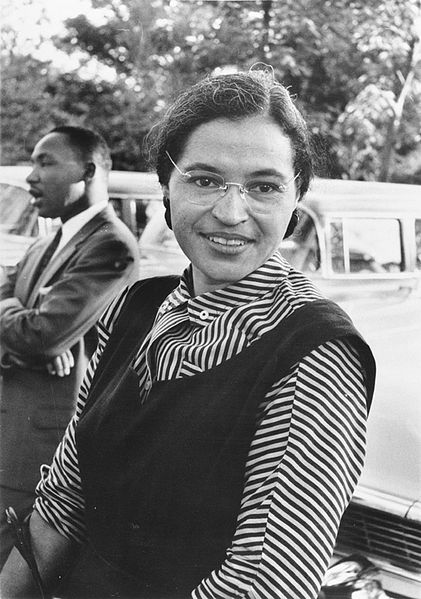
Rosa Parks, with Martin Luther King, Jr. in the Background, 1955, Ebony Magazine & National Archives
Typical of the non-violent movement was Rosa Parks, who refused to sit at the back of the bus in Montgomery, Alabama in 1955. Parks belonged to the African Methodist Episcopal Church, which had a long history of staging such protests, dating back to Philadelphia in the early 19th century. Earlier that year, young women led by Claudette Colvin were arrested for not sitting in the designated black seats on a Montgomery bus. But given Colvin’s youth, volatility, and history of out-of-wedlock pregnancy, the NAACP picked the older, more restrained Parks to be the public face of the protest (the same way the Dodgers had picked Jackie Robinson to integrate baseball). The resulting boycott of Montgomery’s public transit led to the integration of their system.
Boycotts are a classic example of passive resistance dating to the American Revolution, when they were used effectively to check British authority and mercantilist trade policies. The Montgomery incident was also typical of this early phase of the movement insofar as it took place in the urban South and took aim at segregation in public facilities. Groups like the NAACP and SCLC used the courts to force integration in public education and transportation, combining W.E.B. Dubois’ emphasis on legal/constitutional challenges with Booker T. Washington’s emphasis on schools and public institutions. President Harry Truman helped kickstart this phase of civil rights by encouraging the Justice Department to circumvent his fellow southern Democrats in Congress as best they could.
The old separate but equal interpretation of the Fourteenth Amendment that held for half a century after Plessy vs. Ferguson (1896) fell in two cases involving public education: Sweatt v. Painter (1950) and Brown v. [Topeka] Board of Education (1954) — both argued by Thurgood Marshall, who later became America’s first black Supreme Court Justice. Heman Sweatt, the grandson of slaves, was admitted to the University of Texas’ “separate but equal” black law school. It was basically an empty desk in the basement with a used textbook on it and no professors or classes. UT scrambled to build Texas Southern, a black college in Houston, as the case made its way through the lower courts, but eventually lost in the Supreme Court, forcing the school to integrate its classrooms. The Klan terrorized Sweatt on UT’s campus, burning crosses and slashing his tires as the Austin police did nothing, but the case set a precedent for a broader ruling affecting K-12. Meanwhile, the University of Virginia was going through a similar experience and convinced African American Gregory Swanson to drop out.
In 1954, the Court integrated all U.S. public schools in the Brown v. Board case. UT protested these cases by naming a dorm after Confederate soldier, KKK leader, and law professor William Stewart Simkins (they changed the name in 2010). President Dwight Eisenhower wasn’t a big fan of the Brown ruling, either. He’d appointed Supreme Court Justice Earl Warren, who’d overseen Japanese internment camps as California’s Attorney General, under the impression that he was more conservative. Eisenhower overlooked that California had integrated its schools under Warren. Even before Sweatt, Mendez v. Westminster (1946) outlawed segregation in California’s public schools, though that case didn’t challenge the separate but equal clause directly. Likewise, Texas state courts partly integrated their schools by re-classifying Mexican-Americans as white in Delgado v. Bastrop Independent Schools (1948). With President Eisenhower unenthused, not much happened in the immediate aftermath of Brown v. Board regarding enforcement of integration in the nation’s schools. But Eisenhower advocated ending segregation in the District of Columbia and, more importantly, protecting Blacks’ right to vote. He also signed the watered-down 1957 Civil Rights Act that added a civil rights division to the Justice Department but didn’t include any voter protection. Another bill passed in 1960 that gave the federal government the right to inspect voting polls, a precursor to stronger legislation in 1965. NAACP leader Roy Wilkins called these diluted bills “soup made from the bones of an emaciated chicken who’d starved to death.”
Most famously, Ike took a stand against the Arkansas National Guard being used to keep black students out of Little Rock’s Central High School in 1957. He didn’t like a state so brazenly defying a Supreme Court ruling, even one he didn’t care for, and he knew that American racism was feeding Soviet propaganda. Communists everywhere, including Cuba, cited the U.S. as an example of how democracies mistreat minorities. Ike sent in troops and federalized the Guard, as presidents can do through executive order. The 101st Airborne Division escorted the same Little Rock 9 (black students) into the school that the Guard had just kept out before it was federalized. Whites threw acid in one black girl’s eyes and a few tried unsuccessfully to burn her alive in the girls’ bathroom.
Arkansas Governor Orval Faubus eventually closed all the city’s public schools to protest the courts rejecting an appeal to delay integration a few years. The Little Rock incident was ironic since Eisenhower privately opposed school integration but felt obligated to honor the Supreme Court while Governor Faubus privately supported integration but opposed it publicly to support his state. Ike and Faubus met ahead of time to choreograph their showdown appropriately. It was the first show of federal force in the South since Reconstruction but didn’t do much to actually integrate schools across the country. Over a hundred congressmen signed the 1956 Southern Manifesto opposing integration in schools or elsewhere. White Flight suburbanization and lack of compliance mostly saved Whites from the feared indignity of their kids sharing classrooms with minorities. Public pools followed a similar pattern of “desegregation without integration” as Whites across the country abandoned integrated public pools in favor of suburban public pools, backyards or private country clubs. In such scenarios, poor Whites lost public facilities as unintended victims of structural racism.
Whites demonstrated similar resistance in higher education at the Universities of Alabama and Mississippi, nicknamed Ole’ Miss for a term enslaved workers used for their masters’ wives. At the Ole’ Miss Riot of 1962, federal troops sent in by President Kennedy overcame protesters, including one fraternity led by future U.S. Senator Trent Lott, to escort in black WWII combat vet James Meredith. An all-night riot killed two people and students worked in shifts to taunt and harass Meredith the rest of the semester, with one bouncing a basketball above his dorm room all night every night. Some white students dropped out while others rallied around Dixiecrat Governor Ross Barnett and the Confederate flag at Rebel football games. Ole’ Miss’ integration claimed another life indirectly, that of WWII veteran and NAACP field secretary Medgar Evers. Evers was most famous for investigating the Emmett Till murders, and there were several attempts on his life before racists shot him in the head on the heels of Ole’ Miss’ integration in 1963.
At the University of Alabama, similar rioting ensued and Governor George Wallace (D) took advantage of the media exposure. Just as civil rights advocates could take advantage of photojournalism and film, so too could its opponents — in this case from “the cradle of the Confederacy and very heart of the Anglo-Saxon Southland” as Wallace put it (South Carolina might have contested the first part). The WWII vet and former boxer and judge had been a New Dealer who initially resisted the Dixiecrats splintering from the Democrats. He even called African Americans “mister [last name]” from the bench, which was rare among judges at the time. But Wallace lost Alabama’s gubernatorial nomination in 1958 to a Klansman. He vowed he’d never “get out-n****red” again, apologized for not joining the Dixiecrats in 1948, and won the gubernatorial race in 1962. Evoking the Civil War and Reconstruction, the man SNCC co-founder Julian Bond called the “Hillbilly Hitler” pledged to take on the “integratin’, scalawagin’, carpetbaggin’ liars from the North” who were trying to ram integration down white Southerners’ throats. President Lyndon Johnson, a southerner himself who by the early 1960s was wrangling with the more racist wing of the party, called Wallace a “turd in the crystal bowl.”
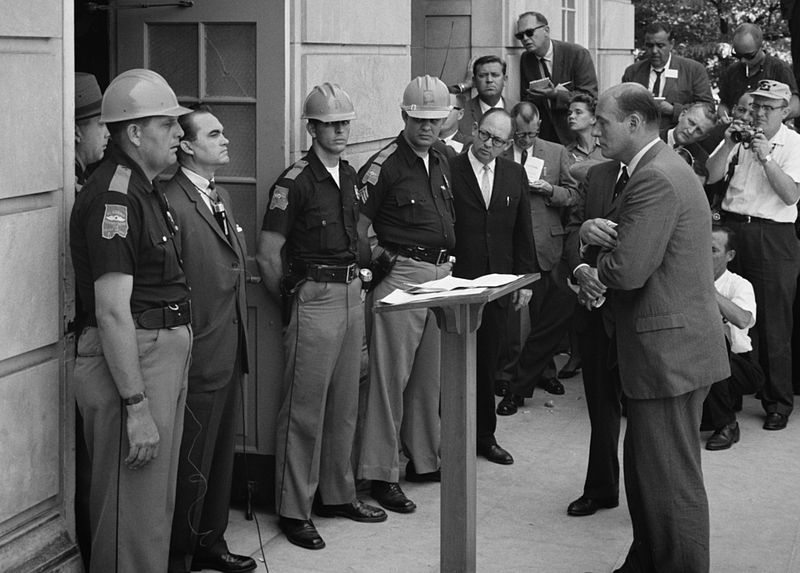
Governor George Wallace Stands at the Door While Being Confronted by Deputy U.S. Attorney General Nicholas Katzenbach
With the cameras rolling in 1963, Wallace blocked the entrance to the University of Alabama and gave the pro-segregation speech that helped launch him to national fame and a presidential run in 1968. He plucked his most famous quote at the Stand in the Schoolhouse Door from his inaugural speech the year before: “In the name of the greatest people that have ever trod this earth, I draw the line in the dust and toss the gauntlet before the feet of tyranny, and I say segregation now, segregation tomorrow, segregation forever.” After the Guard radioed President Kennedy, the governor stepped aside to allow students Vivian Malone and James Hood through the door, while Wallace promised “rebel protest…against communistic amalgamation.” He lost his presidential bid in 1968 and was shot and paralyzed during the 1972 race, after which country music legends George Jones and Tammy Wynette headlined a “Wallace Woodstock” fundraiser. He successfully won re-election as Alabama Governor in 1982, asking forgiveness from the black community. Wallace said, “I was wrong. Those days are over and ought to be over.”
Public schools that allowed Blacks too much access incurred the wrath of politicians. The University of Texas allowed its first class of African-American students in 1956, earlier than most Southern schools. It was costly, though, as they had to re-do all their plumbing so the races weren’t sharing bathrooms or drinking fountains. Today you can still see marble slabs next to drinking fountains where they removed the secondary plumbing in the 1970s. Black music major Barbara Smith Conrad won a part as the Queen of Carthage opposite a white male in the Opera Dido & Aeneas. After several campus groups and parents protested, the controversy spread to the state legislature and garnered national coverage. The music department had to remove Conrad from the role to preserve UT’s state funding, the loss of which at the time would’ve led to UT’s closure (today the state only provides 12% of UT’s funds). Harry Belafonte financed Conrad’s move to New York, where she became a successful mezzo-soprano, and UT stayed open. Dwonna Goldstone’s Integrating the Forty Acres (2006) chronicles UT’s racial history for students interested in further reading.
Schools were just one part of the controversy stirring across the country, but the mixed-race leads in the UT opera symbolized part of the problem. Many Southerners resented the interracial nature of the early civil rights movement, especially if Yankees were involved. In Philadelphia, Mississippi in 1964, a violent wing of the Ku Klux Klan called the White Knights killed three civil rights workers, including one Black and two Jewish New Yorkers, then buried their bodies in an earthen dam. The volunteers were part of the Freedom Summer project at what’s now Miami University (of Ohio), where the SNCC trained brave, idealistic, young Whites to help Blacks register to vote in Mississippi. The Project’s story and the fate of the three victims later inspired the movie Mississippi Burning (1988). At the time, the brutality inspired artist Norman Rockwell (right), who was known mainly for decades of all-American, main street scenes on Saturday Evening Post covers.
As in the Emmett Till case, the perpetrators thought they could escape justice. Why wouldn’t they? Their own sheriff engineered the killings and the original jury was white. This time, though, the FBI and Justice Department intervened, leading to the conviction of seven of the eighteen conspirators in U.S. v. Price (1966). When the White Knights firebombed the home of civil rights leader Vernon Dahmer in Hattiesburg, Mississippi three years later, killing him, the FBI even enlisted mobsters to pistol-whip confessions out of the perpetrators. The Mafia and Klan had a combative history dating back to the Prohibition era.
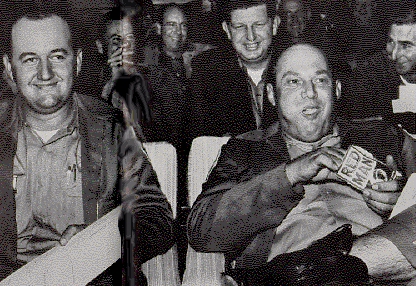
Deputy Sheriff Price and Sheriff Rainey at Hearing After Arraignment for Slaying of Three Civil Rights Workers in Philadelphia, Mississippi, 1964
Reconstruction 2.0
The early 1960s saw racial changes more dramatic than any the country had seen since Reconstruction 1.0 after the Civil War (1865-77). Mississippi and Alabama were the epicenters of protest and reprisal. In 1963, activists lured Birmingham mayor and former Klan member “Bull” Connor into using attack dogs and fire hoses on innocent teenagers, turning public opinion against the oppressors for those who saw the news coverage. It was a classic case of political jujitsu, or turning an opponent’s force against him. “Bombingham” was notoriously violent, partly because dynamite from local quarries was used for dozens of firebombings inflicted on black homes and churches. Birmingham was also home to Reverend Dr. Martin Luther King, Jr. (MLK) and his family.
The KKK’s White Knights blew up the 16th St. Baptist Church in September 1963, killing four girls in a terrorist act that shifted public opinion more in favor of the civil rights movement. In the Freedom Summer of 1964, a volunteer campaign to register black voters in Mississippi, racists burned 35 black churches and, echoing Tulsa 1921 and Germany’s Kristallnacht 1938, destroyed 40 black businesses. With MLK in a Birmingham jail, younger protesters hit the streets to keep the movement alive. Protests in Birmingham and in Montgomery, Alabama morphed into a major march on Washington in 1963, where King gave his famous “I Have a Dream” speech. He’d given the same speech several times already, including in Detroit two months earlier to a crowd of over 100k.
President Kennedy feared violence and tried to talk black leaders out of the March on Washington for Jobs and Freedom. JFK expressed public support for a peaceful march as he was starting to rally support for a civil rights bill, but he didn’t want a march on the capitol building, especially, and authorized use of federal troops to control protestors. March leaders agreed to rally at the Lincoln Memorial instead of the Capitol, and organizers struck the portion from SNCC Chair John Lewis’ speech where he threatened a non-violent version of “Sherman’s [Civil War] March through the South.” Lewis didn’t mention Sherman but used the term black instead of negro, which was cutting edge in the early ’60s. Kennedy was willing to tolerate the march as long as King fired two purported communists in the SCLC, Jack O’Dell and Stanley Levison, men that FBI Director J. Edgar Hoover claimed to know were communists from wiretaps. King fired the African-American O’Dell but retained the caucasian Levison, though the tapes revealed no evidence of communist ties for either man.
The man A. Philip Randolph and MLK put in charge of organizing the March on Washington, Bayard Rustin, had leftist leanings and was gay. Yet Rustin was able to muster celebrity support in Hollywood, led by “chairman” Charlton Heston and including Marlin Brando, Steve McQueen, James Garner, Paul Newman, Burt Lancaster, and Tony Bennett. A critical balance in Hollywood had swung left since the blacklistings of the early Cold War. White folk singers Pete Seeger, Joan Baez, and Bob Dylan sang to the “salt and pepper” audience. Harry Belafonte rallied support among African-American celebrities like singers Sammy Davis, Jr., Marian Anderson, and Lena Horne, author James Baldwin, and actor Sidney Poitier.
They and the rest of the audience perched in trees and gathered around the Lincoln Reflecting Pool and at home on television heard Reverend King give his inspirational sermon in which he put the civil rights movement in the context of American democracy as a whole. If they’d seen the dark side on TV months earlier from Birmingham, they saw the best that day. In his “I Have A Dream” speech, King didn’t say, “We have a radical new idea that will take some getting used to because none of you have heard of it and will involved tearing down American civilization.” He said the Founders had issued a promissory note [Jefferson’s Declaration of Independence] and “it is obvious today that America has defaulted on this promissory note insofar as her citizens of color are concerned. Instead of honoring this sacred obligation, America has given the Negro a bad check, a check which has come back marked ‘insufficient funds.’” This appeal only made sense in a country where some sort of sacred obligation, however unfulfilled, was understood to have existed in the first place. No Declaration, no MLK. When King followed, optimistically, that “We refuse to believe that the bank of justice is bankrupt,” a critical balance of white Americans understood what he meant. Historian Yoni Applebaum wrote: “The United States possesses a strong radical tradition, but its most successful social movements have generally adopted the language of conservatism, framing their calls for change as an expression of America’s founding ideals rather than as a rejection of them.” Conversely, movements predicated on more radical change, like completely overturning capitalism, are doomed to failure in the U.S. Of course, this theory only makes sense in a society with an imperfect liberal tradition to fall back on; it wouldn’t hold for rebels living under authoritarian rule.
Following King’s speech, the main speakers walked directly over to the White House for photo-ops and handshaking with President Kennedy, who was no doubt relieved things had gone well.
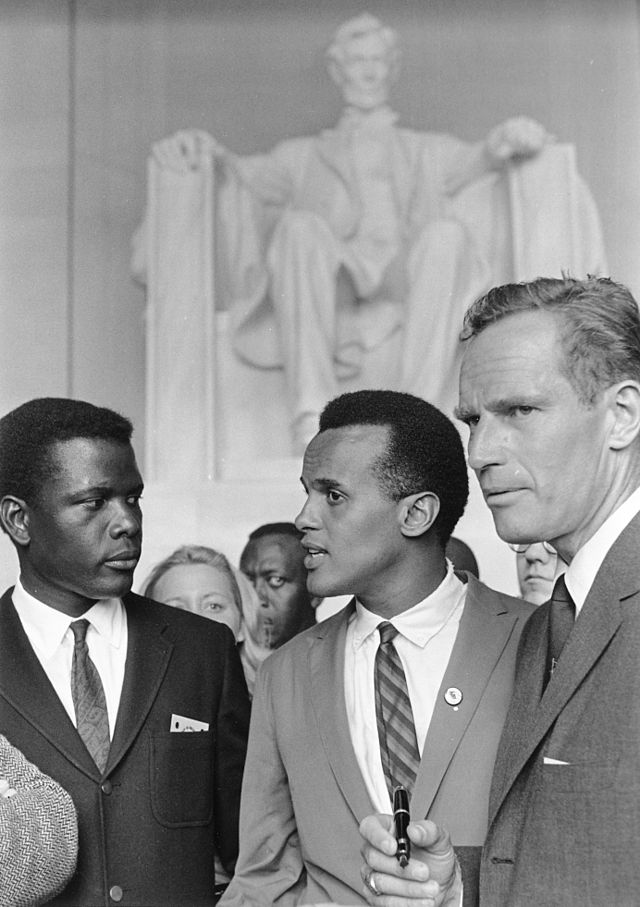
Harry Belafonte (center) at the 1963 Civil Rights March on Washington, D.C with Sidney Poitier (left) and Charlton Heston, National Archives
The March on Washington and events in Alabama and Mississippi contributed to major civil rights legislation the following year, passed after Kennedy’s assassination. Kennedy had opposed civil rights legislation as a senator in the 1950s, hoping to court southeastern votes for a future run at the White House, but he evolved gradually once in office. MLK said that “at last we finally have a president with the intelligence to understand the problem, the political skills to solve it, and the passion to see it through…I’m certainly convinced of the first two.” Kennedy was an incrementalist that didn’t want to push too fast, fearing that would endanger the movement. In the first two years of his presidency, JFK was mostly just annoyed that civil rights demonstrations like sit-ins and the Freedom Rides interfered with his focus on foreign policy and the Cold War. One of JFK’s first decisions was to disinvite black Ratpacker Sammy Davis, Jr. from the inaugural ball when he discovered that his wife was white. But in the last year of his life, provoked by the church bombing in Birmingham, Kennedy developed the passion that MLK hoped for, declaring that “race has no place in American life or law.” Birmingham had a similar effect in Kennedy as Isaac Woodard’s mutilation had on Truman in 1946. JFK said, “We face a moral crisis…it is time to act.” He told Walter Cronkite in a CBS interview that he’d be willing to sacrifice the votes of southern states in his 1964 re-election bid, especially since many there didn’t like him much anyway.

CORE Freedom Ride Bus Firebombed By KKK Outside Anniston, Alabama, May 14, 1961, Photo By Joe Postiglione
Like Booker T. Washington’s gradualism in the early 19th century, Kennedy’s incrementalist idea wasn’t entirely without tactical merit, given peoples’ resistance to sudden change. But by the mid-20th century, such arguments had long since outlasted their shelf life, used mainly as an excuse for perpetual inaction. Kennedy’s VP, Lyndon Johnson, acknowledged just that in an underrated speech he gave at the Gettysburg Battlefield on Memorial Day 1963, commemorating the centennial of the famous Civil War battle fought there. The speech responded to the promotion of non-violent tactics MLK expressed in Letter From a Birmingham Jail. LBJ said, “For years I’ve heard wait!…It rings in the ear of every Negro with piercing familiarity. The wait almost always meant never. The Negro today asks for justice. We do not answer him — we do not answer those who lie beneath this soil [Union soldiers] — when we reply to the Negro by asking for patience. It is empty to plead that the solution to the dilemmas of the present rests on the hands of a clock.” These were strong words, indeed, coming from a Texan who led the conservative Democrats in the 1950s. LBJ, after all, was who made sure the watered-down 1957 Civil Rights Act didn’t include provisions to protect minority voting rights. But, by the late ’50s, Johnson had started to change and he, along with Al Gore, Sr. of Tennessee, refused to sign the aforementioned Southern Manifesto to resist school integration in 1956. Vice-presidents don’t garner much attention, and LBJ’s quick two-hour round-trip helicopter ride from D.C. to Pennsylvania was lost amidst famous speeches that same year by MLK in Washington and JFK in Berlin. For that matter, Abraham Lincoln’s Gettysburg Address wasn’t noticed much in 1863. But LBJ was a changed man and the U.S. was in for some dramatic changes of its own.
When JFK died, President Johnson pressured the FBI to crack down on the KKK rather than Martin Luther King (later the FBI tried to intimidate MLK into committing suicide). Though they later split over the Vietnam War, King worked with LBJ the same way Frederick Douglass worked with Abraham Lincoln in the 1860s and A. Philip Randolph worked with Roosevelt, Truman, and Kennedy. Another important conduit between Blacks and white politicians was Whitney Young, president of the National Urban League. Young urged Johnson to commit money to fight poverty in the same way that the U.S. used the Marshall Plan to rebuild Europe after World War II. Johnson also had an alliance with Texas Hispanics dating back to his teaching days in the Rio Grande Valley and the case of Felix Z. Longoria after WWII. Longoria was a Purple Heart winner who died in the Philippines in 1945, but whose body wasn’t returned to the States until 1949. A funeral parlor in his hometown of Three Rivers denied him wake services (to allow his remains to lie in state) because he was Mexican-American. Freshman Senator Lyndon Johnson worked with the forenamed Dr. Hector P. Garcia to have Longoria interred at Arlington National Cemetery with full military honors, along with 18 others. While JFK courted Hispanic voters in his Viva Kennedy drives, with Jackie speaking Spanish, he’d turned his back on them after the election. LBJ, on the other hand, was committed to promoting civil rights for all minorities.
As we saw in the previous chapter, Congress and Johnson signed legislation outlawing racism in public establishments, including privately-owned businesses, with the 1964 Civil Rights Act. That law, along with the Heart of Atlanta Motel court case the same year, beefed up the Fourteenth Amendment considerably to outlaw formal racism anywhere in any state, not just state-sanctioned racism as it had been interpreted since 1883. The Negro Motorist Green Book we saw in Chapter 15, for instance, went out of publication in 1966. The Voting Rights Act of 1965, combined with the Twenty-Fourth Amendment (1964) and Harper v. Virginia (1966) beefed up the Fifteenth Amendment, outlawing all the various excuses states used to keep Blacks and Hispanics from voting like literacy tests and poll taxes. Though presidents don’t have a direct role in amendments, John Kennedy set the Twenty-Fourth in motion by encouraging Congress to introduce the amendment in 1962 and send it to the states.
Depending on whom you ask, the Voting Rights Act (VRA) has mostly held up, but it’s experiencing pushback on multiple fronts. Photo ID laws, for instance, are purportedly intended to prevent fraud — a cause everyone can agree on — but courts have ruled that such fraud is nearly non-existent, with only a few dozen cases in recent history, and that the real intention is to suppress minority voters, some of whom are too poor to own a car and get a license with a photo ID. Some GOP politicians admitted just that and that the fraud concerns were a marketing ploy (NYT). Influential conservative Paul Weyrich, who coined the term moral majority and co-founded the Heritage Foundation think tank, said “I don’t want everyone to vote…our [Republican] leverage in the elections goes up as the voting populace goes down.” Donald Trump told Fox & Friends that measures like streamlined registration and election day holidays that Democrats favor would trigger “levels of voting that, if you’d ever agreed to it, you’d never have a Republican elected in this country again.” The Justice Department lost some control over former Confederate states like Alabama after the Shelby County v. Holder (2013) case. The judges argued that Section 5 of the VRA, that required former offending states to clear new laws with the federal government, was no longer necessary precisely because it has been so effective. But if that had really been the case, then nobody would’ve put so much effort into overturning it (the same logic applies to a lot of deregulation arguments). Alabama quickly outlawed early voting and closed DMV’s in its blackest counties, making it harder to get the licenses needed for voter registration, while North Carolina passed stricter ID laws. Dissenting Judge Ruth Bader Ginsberg likened tossing out a law because it worked to “throwing away an umbrella during a rainstorm because you’re not getting wet.” While the actual cases of voting fraud are minimal, conservative writer Rich Lowry argues that the number of minorities affected by voter ID laws is also small (Politico). For competing takes on how influential the Holder case has been on lowering minority turnout, see the optional articles below from the Southern Poverty Law Center and National Review.
Voter ID laws are just the tip of the iceberg, though. One effective trick is just to have fewer places to vote in bad neighborhoods, leading to long lines that could be lengthened even more by banning early or mail-in voting and made more unpleasant by banning “line warmers” from handing out blankets and water. States can not only reduce voting opportunities in urban but not rural areas (e.g., Texas proposing limiting drop-off boxes to one per county regardless of county size in 2020), they can make registration difficult, purge registration rolls of changed addresses without reminding the voter to update (“caging”), ban third party volunteer groups from collecting absentee ballots from the elderly (“ballot harvesting”), or toss out provisional ballots cast in the wrong precinct while changing the precincts between elections in certain strategic neighborhoods. The latter two measures in Arizona were part of Brnovich v. DNC (2021) that challenged Section 2 of the VRA that outlaws racial discrimination in state and local elections and portions added in 1982 that banned such tactics if they have a substantial, uneven racial impact. When Amy Coney Barrett asked Arizona’s GOP attorney why they were challenging Section 2, he replied that “it puts us at a competitive disadvantage relative to Democrats.” The Court ruled 6-3 that both of these two Arizona provisions were only incidentally racist, leaving the door open for SCOTUS to still revisit the Voting Rights Act in more blatant cases. It is not entirely “gutted” as sometimes spun on the left. But post-Brnovich, expect a continuing tsunami of seemingly race-neutral laws in red states that, by chance, include features that lower minority voter participation, mainly by making voting in urban areas more inconvenient. For instance, voting won’t be allowed on Sundays, which will incidentally prevent black churches from busing congregations to polls after church (aka “Souls to Polls”). Tighter voting restrictions also snag Whites as collateral damage, including those that are disabled, can’t vote early, and/or work hours that make it difficult to get to polls before they close early. There is no push to outlaw minority voting or return minority participation to pre-1965 levels.
In Georgia, Florida, and Texas in 2021, voting reforms were bundled with race-neutral laws and other measures that secured or even expanded voting rights to camouflage their collective purpose. Many of the race-neutral measures were/are legitimate, sound policy and liberal media glossed over that some of them were already on the books in blue states. But the timing of these “voting integrity” reforms reinforced Trump’s “stop the steal” narrative, implying that he would’ve won in 2020 had they already been in place while ignoring the more glaring problem that an incumbent president tried to overturn election results. It’s a classic example of subtext being more important than the charade on the surface. Purveyors of this spin bank heavily on their audience missing the context by being unable to “see the forest through the trees” (Rear Defogger #2 in tab above). Otherwise, these reforms were mainly a solution in search of a problem. Had Texas experienced widespread fraud because Harris County (Houston) made voting easier and safer during COVID-19, the reforms would’ve made sense. But, since that didn’t happen, it created the unfortunate (if false) impression that the real concern was simply higher-than-hoped-for Democratic/African-American turnout. Texas commissioned a 22,000-hour study that concluded 0.00001% of voters in Harris County (16/1.6 million) cheated in the 2020 election. They didn’t investigate other counties. The main headline should’ve just been kudos for successfully pulling off an election with good turnout during a pandemic.
Texas’ proposed voting reform will include mandating paper trails, which was already in motion and has bipartisan support. That will be helpful if it has real domestic fraud or if a foreign country hacks into the machines, as Russia did in some states in 2016, though they didn’t change any votes. And it will extend early voting and make it possible to fix broken ballots — also both good. The law will also eliminate the drop-boxes, drive-through and 24-hour voting access temporarily in place because of COVID-19 (and future potential pandemics?). The rub is that Texas will transfer control over polling stations from counties to the state, who will ban using sports stadiums like the Toyota Center (Rockets) and other large venues in urban precincts like Harris County and could avoid placing polls convenient to busy intersections or mass transit. The bigger issue is that transferring power from bipartisan to partisan election officials or the legislature could result in them overturning results based on spurious fraud charges. If Georgia ran its 2020 election over again today, for instance, they’d likely reverse the outcome and award Trump the victory because they’ve gotten rid of the Republicans that stood up to him. If Trump ordered them to “find more votes,” they’d likely comply.
The Texas bill will also ban the straight-ticket voting option, though voters can still vote all for one party on an itemized basis. Anyone that helps a disabled voter needs to swear an oath that they didn’t influence his/her votes and will be subject to felony prosecution for offering or accepting bribes. While voter fraud is already low nationally — ranging from 0.0003 to 0.0025% by most accounts — it’s possible that fraud surrounding voters with disabilities could be safely rounded to 0.0%. Also, Texas will empower partisan poll watchers with more mobility and video rights which, God willing, won’t be of any interest. These poll watchers can’t be tossed out of polling centers until their second rules violation and can monitor officials more closely so as to overhear their conversations and watch their very move.
Nationally, the H.R. 1 bill (aka For the People Act) that passed the House after being re-introduced in 2021 would’ve overridden the state legislation intended, at least in the minds of its critics, to restrict turnout. It would’ve bolstered voter rights and access for all legal citizens and, most importantly, banned partisan gerrymandering (more in Chapter 20), but Republicans defeated it with the Senate filibuster, mostly on the grounds of states’ rights.
Just as the protests and bombings in Birmingham led to the March on Washington and 1964 Civil Rights Act, two main developments furthered the cause of voting reform. First, the Mississippi Freedom Democratic Party — that demanded representation as part of their state’s delegation to the 1964 Democratic Convention in Atlantic City — drew attention to voting discrimination even though the group failed at the time to win voting seats. On the right is one of their leaders, Fannie Lou Hamer, a gospel-singing activist who’d been viciously beaten by blackjack-wielding police in Winona, Mississippi. The spirituality of leaders like MLK and Hamer lent the cause moral credibility, helping to steer public opinion in favor of civil rights reform. Conversely, the public associated that particular type of baton with the Nazi Gestapo and attacking leaders like Hamer allowed cartoonists to lampoon authorities. In contrast to the Civil War era, some white ministers in the South started to lead their flocks toward enlightenment and justice.
Second, the 1965 Selma-to-Montgomery Marches (in the photo at the top of the chapter), led by the SNCC and SCLC, bolstered support for the 1965 Voting Rights Act. This, too, had Christian undertones as the beating death of Baptist church deacon Jimmie Lee Jackson at the hands of Alabama State Trooper James Bernard Fowler spurred the march. Fowler pled guilty to manslaughter in 2010 and was sentenced to six months in prison. State troopers accompanied by deputized, armed citizens met the marchers at the Pettus Bridge east of Selma, attacking them with tear gas, cattle prods, and billy clubs on “Bloody Sunday.” They fractured the skull of the forenamed John Lewis, who served as a Georgia congressman from 1987 to 2020. The sheriff had ordered all white males over 21 in Dallas County to be deputized. Despite the KKK assassinating several leaders, a federal judge granted the protesters the right to march and petition Governor George Wallace at the capital. When marchers finally made it to Montgomery two weeks after Bloody Sunday, they were greeted by a concert featuring Harry Belafonte, Tony Bennett, Sammy Davis, Jr., Joan Baez, Frankie Lane, Nina Simone, and Peter, Paul & Mary. The classically-trained Simone captured the spirit of the era with her angry hit “Mississippi Goddam” (YouTube). Public opinion across the country was shifting. LBJ chided Governor Wallace and, two days later, presented a bill to Congress that became the Voting Rights Act. Most bills originate in Congress, but LBJ led the charge himself on civil rights from the executive branch. Johnson echoed the “We Shall Overcome” theme of the Alabama marches when he pressed Congress to pass the Voting Rights Act.
Collectively, the ’64 Civil Rights Act and ’65 Voting Rights Act were the most significant steps forward since Reconstruction a century earlier, or backward for racists and states’ righters. While racism, discrimination, and economic inequality still existed, minorities had at last won full U.S. citizenship. Reverend King said, “It may be true that the law cannot make a man love me, but it can stop him from lynching me, and I think that’s pretty important.” After two centuries of resistance, the U.S. had become a full-blown democracy on paper at least, though at this point boys old enough to fight in Vietnam (18) still couldn’t vote because the age limit was 21.
There are plenty of thinkers worth reading that disagree with your author’s Whiggish take on racial history — that the U.S. is an imperfect country that is gradually, if unevenly, moving toward a fuller democracy — and I encourage you to read the optional articles below by Ibram X. Kendi, Mychal Denzel Smith, and Amira Rose Davis, who would argue that, if America is a house, it’s in need of a total gut-job rather than ongoing repairs or remodeling. Many modern anti-racists are skeptical of incremental reforms and Dr. King’s optimistic prediction that “the arc of the moral universe is long, but it bends toward justice.” For more hopeful, contrarian African-American takes, see articles below by John McWhorter or Coleman Hughes. The latter, along with Glenn Loury, advocate transcending the fixation on racial boundaries — especially given the growing millions of mixed-race Americans and the fact that geneticists see race mostly, not completely, as a social construct rather than biological reality — whereas Kendi and Ta-Nehisi Coates acknowledge that science but emphasize retaining black identity, more in the tradition of Malcolm X. They think it’s premature to envision a post-racial society and employ critical race theory (CRT) as a framework to uncover the modes of suppression embedded in the legal, economic, and educational system that undergird systemic racism (e.g., housing in Chapter 15, law enforcement, etc.). Author James Baldwin (1924-1987) grappled with the need to retain racial identity in order to fight discrimination: “We find ourselves bound, first without, then within, by the nature of categorizations.” While the actual term CRT popped onto the mainstream radar recently, there’s currently a lot of hyperbole and emotion surrounding it. Republican state legislatures are trying to outlaw CRT in public school curricula (it’s already illegal in Texas at the K-12 level) while most teachers, without getting too theoretical, acknowledge how the legacies of slavery and racial discrimination created ongoing, uneven playing fields.
Three other laws/rulings rounded out the famous legislation of 1964 and ’65. Immigration laws mostly shed their racist qualifications with the 1965 Hart-Celler Immigration and Nationality Act, as the U.S. once again welcomed people from around the world by abolishing the national origins quota system that had been in place since the 1920s and slightly loosened up in 1952. UT Historian Madeline Hsu learned that, while this law occurred during the Civil Rights movement, it was motivated at least as much by Cold War considerations. The U.S. feared, for one thing, that its racism was causing “brain drains” such as Chinese-American engineer Qian Xuesen emigrating to China to seed their space program.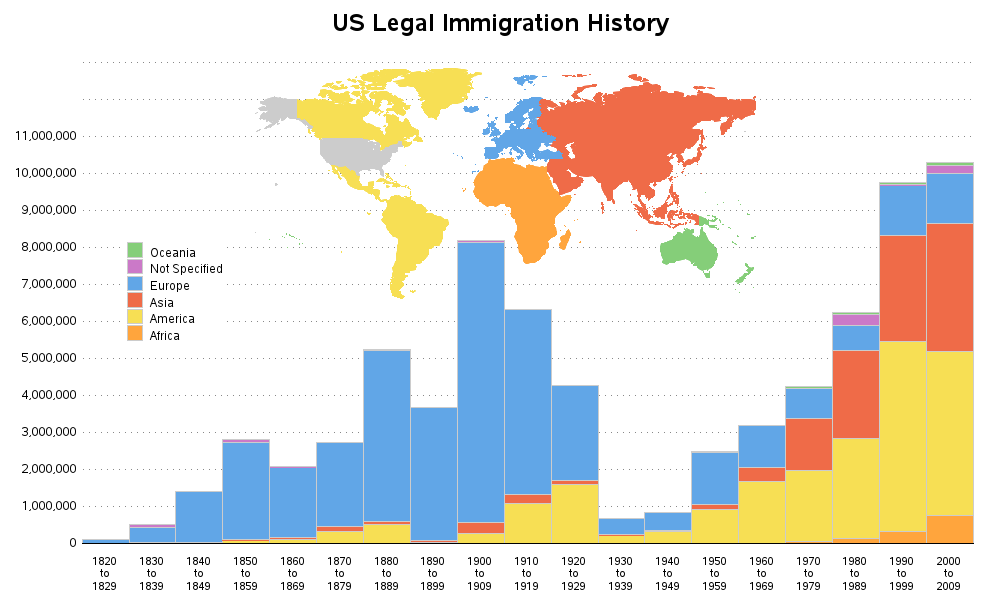
President Johnson sensed that immigration reform wasn’t that popular and Congress pushed the legislation through as quickly and quietly as possible. One of its sponsors, Emanuel Celler, assured the public when asked that it wouldn’t increase immigration from Africa and Latin America very much anyway because it mostly allowed in skilled workers. Politicians didn’t anticipate how dramatically the 1965 law would diversify the United States.
As globalization kicked in by the 1990s, business leaders pushed for lax enforcement of illegal immigration laws, creating a political firestorm that we first explored in detail in Chapter 7. Under the Bill Clinton-era PRWORA Act (1996), legal immigrants can’t receive welfare benefits for the first five years of their citizenship and, contrary to skewed information from the CIS, illegal immigrants get no benefits beyond public schooling and emergency-room care, though some pay into the system through taxes. The shibboleth that illegals are milking the system is wrong because it’s impossible to receive Social Security or Medicare/Medicaid benefits without a Social Security number. Historian Maddalena Marinari pointed out that a racial hierarchy also emerged within illegal immigration making it easier for undocumented Europeans to attain citizenship than others.
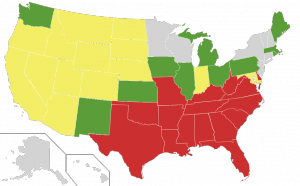
Loving v. Virginia Forced States In Red To Abandon Anti-Miscegenation Laws In 1967; States In Green Dropped Such Laws Prior To 1887, States In Yellow Between 1948-1887 And States In Gray Never Had Them
Then, in 1967, the Supreme Court ruled in Loving v. Virginia that Virginia’s anti-miscegenation law banning interracial couples was unconstitutional per the Fourteenth Amendment, overturning numerous precedent cases and similar laws in fifteen southern states. The Court ruled that marriage was an inherent right. The movie Loving (2016) tells the tale of Richard and Mildred Loving’s nine-year struggle to live as a family in their hometown of Central Point, Virginia. The 2010 Census classified 10% of marriages as mixed-race, 25x more than 1960. Then again, we now know enough about genetics to understand that, in the big scheme of things, all of us are related anyway. Finally, Congress passed the Fair Housing Act in 1968 as part of another civil rights bill, banning the discriminatory practices in real estate that we covered in Chapter 15. These three laws/rulings involving immigration, interracial marriage, and housing are the most underrated aspects of the civil rights movement.
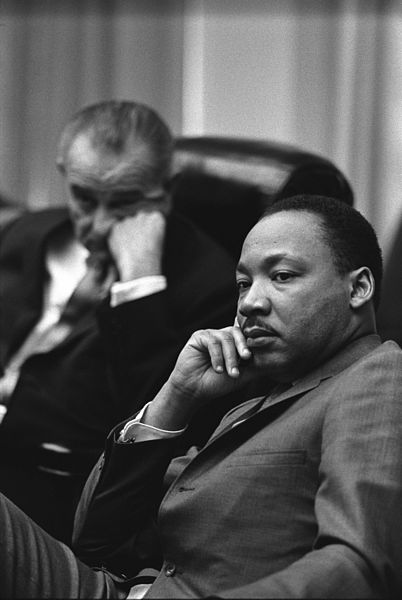
President Lyndon B. Johnson and Rev. Dr. Martin Luther King, Jr. Meet @ the White House, 1966, LBJ Archives
The Civil Rights Act and Voting Rights Act overcame epic filibusters in the U.S. Senate. Leading Democrat Richard Russell, Jr. of Georgia, LBJ’s old mentor, warned that the new legislation would lead to white slavery, and destroy any chance of opportunity for the ordinary “garden variety type American.” Then, as now, American is often used as code for white. Russell was concerned that giving minorities citizenship would “upset harmonious racial relations.” He was echoing graver concerns of Mississippi’s Governor Barnett, who warned that liberating Blacks would lead to certain genocide for Whites. George Wallace equated white freedom with black oppression: the “federal force-cult”’ was trying to push the white South “back into bondage” with a liberal state more powerful than what “Hitler, Mussolini, or Khrushchev ever had.”
Victims of the forementioned zero-sum fallacy, these politicians couldn’t wrap their minds around a scenario in which neither race discriminated, enslaved, or killed the other, unwittingly revealing much about their subconscious take on white history. They now saw themselves as victims of reverse-discrimination, with “negroes being served everything on a silver platter,” as one put it. There was a grain of truth to the zero-sum line of thinking only for those Whites whose pride and identity was grounded in racism. In a 1971 interview with Playboy magazine, actor John Wayne said, “I am a white supremacist…we can’t all of a sudden get down on our knees and turn everything over to the leadership of the blacks.” To clarify, so far in all of recorded American history not a single person has ever suggested that Whites forfeit their citizenship or freedom or “turn everything over” in the process of granting minorities citizenship.
Senator Russell lamented JFK’s assassination because he was confident the Senate could’ve defeated him on civil rights. As former ringleader of southern Conservatives, LBJ was another animal altogether. By 1964, the first Southern president since James Polk (1849) had dedicated the nation to more truly realizing the idea Jefferson wrote about in 1776. Said Johnson: “We believe that all men are entitled to the blessings of liberty. Yet, millions are being deprived of those blessings…The reasons are deeply embedded in history and tradition and the nature of man…We can understand — without rancor or hatred [toward Whites] — how all this happened…But it cannot endure.”
Houston, Texas felt the impact of these new laws right away. The stadium their Colt 45’s baseball team played in was humid and mosquito-infested. The National League granted them the franchise with the understanding that they’d try to build the first-ever indoor ballpark. At first, they thought they could manipulate the soil and find a way to grow grass through a partly clear ceiling. When that didn’t work, they invented Astroturf (necessity is, after all, the mother of invention). The problem was they needed voters to pass a bond issue to build the new Astrodome and Blacks could now vote. Their only choice was to cave in and allow Blacks to attend events there. Appropriately enough, the stadium opened in 1965 with a Judy Garland and Supremes double billing. You can rest assured that the Supremes, a Motown group, wouldn’t have opened for Garland without the Voting Rights Act. President Johnson attended the Astros’ opening night that month to celebrate the stadium, but everyone understood the city was crossing a bigger hurdle than playing history’s first indoor baseball game. He needed to look no further than the integrated crowd around him to see the impact of the laws he’d signed the previous year.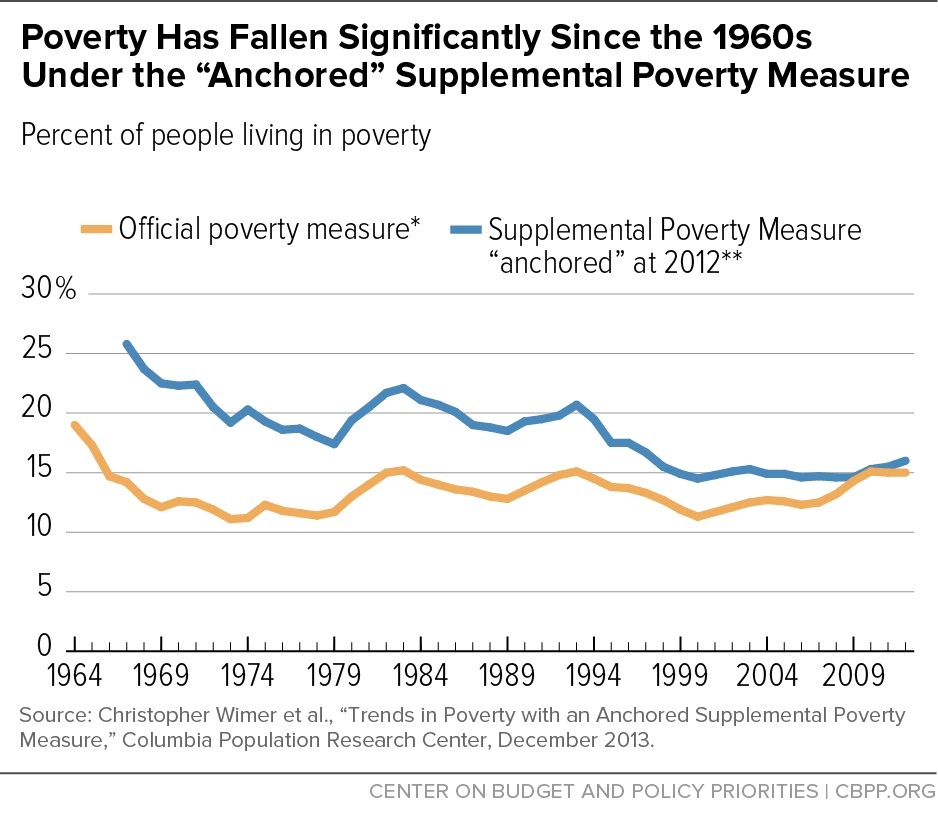
President Johnson’s Great Society had mixed results. Genuine and substantive political gains didn’t translate into dramatic economic reform. MLK understood the economic components of what we call structural or systemic racism and what he called “entrenched financial privilege,” noting late in life that it “didn’t cost a penny” to integrate lunch counters or give Blacks the vote, but creating equitable economic opportunity would cost billions. That’s what the Great Society attempted with mixed results. It lowered the rate of black poverty and malnutrition for pennies on the dollar (despite taxpayer’s complaints), bolstering the black middle class. The percentage of African Americans without indoor plumbing dropped from 40% to 17% between the 1960 and ’70 censuses. Overall poverty rates dropped, if not as “significantly” as the caption to the right suggests. This success resulted not just from economic aid, but also the various civil rights acts of 1964-68. Yet, minorities lost ground during the Great Recession starting in 2008, with middle-class black and Hispanic net worth dropping nearly 50% and the poverty rate going back up to 24% before dropping back down to 18.5% by 2018. As of 2020, the average net wealth of African-American families ($17k) was just one-tenth that of white families ($171k). Prior to the Great Society, net wealth averaged 5% that of Whites instead of 10%, while surveyed Whites estimated that it jumped from 50% to 90%.
Many African Americans and Hispanics remained in poverty in poor neighborhoods and “second-hand suburbs,” with underfunded public schools and poor municipal sanitation. The historic legacy of redlining, subprime mortgages, segregation, and neighborhood covenants we saw in chapters 7 and 15 was still in place even after the Fair Housing Act, creating residual, institutional, systemic, or “structural racism.” The Trump Management Company’s wrangling with the Justice Department in the 1970s was typical of friction in many cities. African Americans remain far more likely to live in poverty than the rest of the population, and more exposed to pollutants like particulate matter (PM) that damages lungs and likely causes pediatric asthma. Poor neighborhoods are more prone to lead poisoning from paint and dilapidated plumbing, with effects too numerous to unpack here. African-American women are three times more likely to die during childbirth than white women. There’s a history of medical discrimination too legion to unpack here, ranging from the infamous Tuskegee Syphilis Study (1932-72), in which African Americans were infected without their consent for experimentation, to migrants being bathed in kerosene and doused with DDT to rid their bodies of lice. School integration hasn’t progressed since the 1980s, which is especially unfortunate given studies showing that African-American children who benefited from busing in the 1960s and ’70s had higher rates of academic success and lower rates of incarceration than those that didn’t. Since American public education is often funded by property taxes, resources and money flow to wealthier kids. Landlords are less likely to rent to minorities with the same financial profile as Whites, and federal rental assistance is essentially a lottery system while, meanwhile, the government continues to pay homeowners through the mortgage-interest tax deduction. The criminal justice system metes out higher bails and longer sentences to minorities than Whites for like crimes and there are even prosecutors who teach workshops on how to toss out minority jurors in the selection process since all-white juries are more likely to convict minorities.
Compounding those problems, young African-American men are still targets of racial profiling by police, employers, and other citizens, making it harder to find good jobs. You’ll meet very few law-abiding black men who haven’t been pulled over or strip-searched for no good reason. Senator Tim Scott (R-SC) told NPR he was pulled over seven times in one year in Washington for DWB and was once denied entrance to the Capitol despite showing his Senate badge. A seven-year Stanford study of footage from Oakland Police dash-cams showed that initial greetings between officers and pulled-over drivers were similar across races but that white police explained to minorities why they were being pulled over less frequently and later than they did to Whites. Two-thirds of the time sociologists could determine the race of the driver from the text of the exchange without viewing the footage. Fewer Whites nationwide are shot in traffic stops that originate with trivia like broken turning signals. Senator Corey Booker (D-NJ) had a white couple stand in with realtors so that he and his wife could buy a house in suburban New Jersey. While studies have shown that Blacks are no more likely to abuse drugs than Whites, and no more guilty of violent crimes when adjusted for unemployment rates, young black males filled the rapidly growing prison system in the fifty years after the Civil Rights movement. Those released from prison lack hard-won rights such as voting. With few employment prospects, many cycled back into the prison system (recidivism) in what litigator Michelle Alexander called the New Jim Crow.
Rioting & Police Brutality
The Civil Rights Movement had never been seamlessly unified, but the rupture between the passive resistance phase and a more militant strain grew wider in the mid-1960s, as rioting plagued cities outside the South. And none of the legal reforms of the mid-60s dealt directly with the still-contentious issue of police brutality. One major riot in the Watts section of Los Angeles came just days after passage of the landmark Voting Rights Act, sparked by a drunk driving arrest and roadside argument. The Watts Riots led to 34 deaths and $40 million in property damage before being put down by 4k California National Guard. Watts got associated with the phrase Burn, Baby! Burn! that, like Defund the Police in 2020, repelled moderates (including many African-Americans) and played into the hands of “law and order” conservatives like Richard Nixon.
Yet, on one revealing memo archived at the LBJ Library in Austin, President Johnson scribbled ”I’d be mad as hell, too” next to a passage on black rioting. He wasn’t referring to the Watts incident in particular. Harlem, Detroit, Cleveland, Chicago, Milwaukee, and Newark (NJ) also experienced breakdowns in race relations as police and National Guard struggled to maintain order. One poll showed that Whites who thought LBJ had “pushed too fast” on civil rights jumped from 28% to 52%. One inventory from the 1967 Newark Riots found about 100x more National Guard shells than those fired from the guns of black rioters. Rioting was widespread after Martin Luther King’s assassination in 1968, with unrest in 125 cities leading to 46 deaths and thousands of injuries. The 82nd Airborne Division surrounded the Capitol with sandbags and gun emplacements. Baltimore never really recovered from the fire damage Blacks inflicted on businesses in their own neighborhoods in the wake of King’s death.
In 1967, MLK said that “a riot is the language of the unheard.” On the surface, there was plenty of blame to go around, starting with Whites’ initial discrimination after the Great Migration, without which none of this would’ve happened, and including outnumbered white police going overboard harassing Blacks, and rioting Blacks killing innocent Whites and destroying their shops. Yet, we also have to ask ourselves about the root cause of rioting, regardless of what transpires. Criminology bibliographer Thomas Kessler wrote of violent uprisings that “understanding and acknowledging a disease is in no way synonymous with endorsing, supporting, or liking its symptoms and effects.”
In Los Angeles, tensions continued in subsequent decades, with the LAPD using paramilitary-style SWAT teams that originated in the riots of the ’60s to combat drug gangs like the Crips and Bloods in the 1980s. These gangs were a menace to society, especially law-abiding citizens of ghettos, and more than normal police patrols could combat. But the SWAT teams’ heavy-handed tactics impacted and alienated broader minority populations, leaving them resentful and fearful. Nationwide, to this day, poor minority families are more likely to have their homes invaded in big no-knock drug raids that can approach the wrong address or injure and traumatize innocent children and the elderly.
In Los Angeles in 1991, a passerby videotaped white cops beating up black, unarmed drunk driver Rodney King with batons. The police claimed they thought King was on PCP though subsequent toxicology reports showed he wasn’t. King was a convicted felon (armed robbery) who knew another DUI arrest would violate his parole, leading to the high-speed chase that preceded the beating. An all-white jury acquitted the police after the city moved the trial to the lily-white suburb of Simi Valley. The follow-up investigation revealed recordings of white police joking about pounding “porch monkeys” and likening their patrols to the movie Gorillas in the Midst. When the city tried to rectify their image by keeping ex-football star O.J. Simpson’s murder trial downtown in 1994-95, a mostly-black jury acquitted “the Juice” despite DNA evidence implicating him in the death of his wife, Nicole, and Ron Goldman (both white). Earlier, we discussed the importance of jury duty. The bookended King and Simpson cases illustrate how difficult it is to find objective, impartial “post-racial” jurors in a mostly segregated, racially-charged city. The jury in O.J.’s trial didn’t really think he was innocent, they were just balancing out the scale of justice, in their view, for years of racism on the part of the LAPD. The prosecution cringed as officer Mark Fuhrman, one of the officers at the crime scene, took the witness stand and confessed to beating n*****s and denying their constitutional rights. “You don’t need probable cause…you’re God,” he said, confirming suspicions in the jurors’ minds that the evidence might have been planted. Four years after O.J.’s acquittal, the LAPD’s anti-gang Rampart division was implicated on multiple charges of torture, planting evidence, drug theft, and bank robbery, leading to the release of more than 100 convicts and a $78 million dollar settlement.
Today, relations between white police and black citizens remain fraught with tension, racism, misunderstanding, and abuse, as America was painfully reminded of in 2014-21 with incidents in Ferguson (MO), Baltimore, Cleveland, Staten Island, Charleston, Chicago (2x), Sacramento, Atlanta, Baton Rouge, Aurora (CO), Minneapolis/St. Paul (3x), Charlotte, Las Vegas, Louisville, Kenosha (WI), and Austin (Michael Ramos) among other places. Elijah McClain’s ordeal in Aurora in 2019 was as harrowing as any. In Baton Rouge and Minneapolis (Falcon Creek), black victims Alton Sterling and Philando Castile weren’t unarmed, but rather exercising their rights in their respective states for open carry. In Baltimore, police (three black, three white) allegedly killed Freddie Gray accidentally while subjecting him to a “rough ride,” whereby a handcuffed suspect with no seatbelt is tossed around in the back of a van. Gray was arrested for possessing an illegal switchblade. In Louisville, plainclothes police fatally shot unarmed Breonna Taylor six times after her boyfriend (thinking they were intruders) fired off warning shots when they entered her apartment with a “no-knock warrant.” In Chicago, white officer Jason Van Dyke pumped 16 rounds into knife-wielding African American teenager Laquan McDonald and the department covered up the video for two years (a jury indicted Van Dyke in 2019). While Van Dyke was awaiting trial on murder charges, the police union hired him as a janitor. In Gray’s case, not only were half of the arresting officers African-American, so too was the police chief, district attorney, and mayor.
Just as television and photo-journalism awoke Americans in the 1960s, phone cameras and dash-cams film video today that would otherwise go unnoticed by mainstream media. In Minneapolis in 2020, officer Derek Chauvin asphyxiated counterfeiting suspect George Floyd with a knee on his neck in broad daylight while onlookers filmed the murder, leading to nationwide protests in what became the flash point case (for Austin’s story, see Texas Monthly). Chauvin was convicted of second-degree murder and sentenced to 22 years in prison.
Insofar as video amplified the ongoing problem of police brutality, the Rodney King beating and post-trial riots were a harbinger of things to come. That same year in Los Angeles, a security camera captured Korean-American store owner Soon Ja Du shooting 15-year-old African American Latasha Harlins in the back of the head with .38 caliber after a dispute over a bottle of orange juice that, it turns out, she hadn’t shoplifted. The jury gave Du just five years probation and 400 hours of community service. Shortly after, the acquittal of the officers in the King case led to a major riot in South Central L.A. Notoriously hard-line police chief Daryl Gates went AWOL and, for hours, rioters controlled the streets, with some even taking the offensive and surrounding police headquarters. Smaller-scale rioting took place in other cities around the country. The 1992 Los Angeles Riots led to 53 deaths, Black-on-Korean violence, and widespread property damage (3k fires), mostly fueled by the looting of liquor stores. Americans watched on television as helicopter reporters filmed black rioters dragging innocent white construction worker Reginald Denny from his truck and nearly stomping him to death in the middle of a crowded intersection.
Americans debate whether these incidents are outliers in an otherwise “post-racial society” or evidence of persistent, entrenched racism. When Dylann Roof killed nine Blacks in Charleston’s Emanuel African Methodist Episcopal Church in June 2015, Fox & Friends initially speculated the crime was part of a pattern of attacks on Christianity and didn’t concern race. As of 2015, though, there was no such pattern in American history of violence toward Christians other than white supremacist attacks on black churches. Partly because of the photo on the left, Charleston also broke the GOP’s support for Confederate flags at statehouses, military bases, etc., which had been fairly steady in the half-century since the Civil Rights Movement. Likewise, conservative historians like Dinesh D’Souza mostly dropped the Lost Cause theory of the Civil War that dismissed slavery’s importance, instead focusing on the Democratic Party’s racist heritage (see the optional article below by Matthew Karp that also deconstructs the original sin and moral arc of the universe metaphors).
Unfortunately, these didn’t end in the 1960s. According to the Bureau of Alcohol, Tobacco & Firearms, there was another spate of 25 attacks on black and mixed-race churches in the mid-1990s, excluding a foiled attempt by Skinheads to ignite a race war in Los Angeles in 1993 by machine-gunning down an AME congregation. Racists burned a church in Massachusetts to protest Barack Obama’s inauguration in 2009. By proud admission of their perpetrators, all these incidents were racially motivated, though there have also been religiously-motivated attacks on Buddhist temples (Waddell, Arizona 1991), the Tree of Life synagogue in Pittsburgh (2018), Islamic mosques post-9/11. and mass shootings aimed at Christians in Colorado Springs (and Arvada) in 2007 and Sutherland Springs, Texas in 2017. That same year, a deranged congressional candidate from Tennessee, Robert Rankin Doggart, admitted plotting to wipe out mostly Muslim Islamberg, New York with light artillery, pistols, and machetes, telling the FBI that “if it gets down to the machete, we will cut them to shreds.”
Racial violence is not typical of police and definitely not taught in training, but it’s too widespread and consistent to ignore. In the 1990s, Chief Gates said of escalating choke-hold deaths on Black suspects that “when it is applied, [their] veins or arteries do not open up as fast as they do in normal people.” Gates said that small-time drug users should be “taken out and shot.” While more unarmed Whites are shot by police each year than Blacks, the proportion of unarmed Blacks killed in violent encounters is ~ 3x higher (Washington Post, 7.11.16) and 2x higher for Latinos. Police have more encounters with African Americans because of higher crime rates (and expectation of crime) in poorer neighborhoods and racial profiling. To drill down deeper into the statistics differentiating between types of encounters, see Clayton’s optional article below. Clayton’s math is key because it involves a core premise of Black Lives Matter, though BLM’s agenda transcends the disproportionate number of African Americans victimized by police brutality.
Good police are pressured to not incriminate those that aren’t behind the Blue Wall of Silence (aka Blue Code, Blue Shield, or Blue Curtain) that applies not just to brutality but any misconduct or corruption. In the Rodney King beating, eight officers other than the four beating him stood by and watched. All eight returned to their precincts and filled out reports and not a single one mentioned the beating. In Chicago, officer Van Dyke’s fellow officers, supervisor, and superintendent all contributed to the cover-up. Officers argue that their overall aim is to protect lives, including black lives, in crime-ridden communities, and they are under constant stress as they deal with suspects brandishing weapons. They have only a split-second to make their decisions. In the 2010s, innocent officers were slain in New York and Hattiesburg, Mississippi to avenge police brutality. In 2016, African American sniper (and veteran) Micah Xavier Johnson killed five white officers and wounded nine others at an otherwise peaceful Black Lives Matter rally in Dallas. In 2020, right-wing Boogaloo Bois killed two officers in California with a drive-by shooting in Oakland and improvised explosive device (IED) in Santa Cruz Co., the former of which the Justice Department initially tried to blame on left-wing Antifa. Avenging murders by killing innocent officers is equally unjust and only puts other police elsewhere more on edge and likely to shoot first and ask questions later. Meanwhile, open carry laws in many states give police even less time to make their split-second decisions. Luckily, in the Dallas case, the police had the restraint in the confusion and heat of the moment to not open fire on numerous peaceful activists toting semi-automatic rifles, and vice-versa. Later that night, police killed Johnson with a robot.
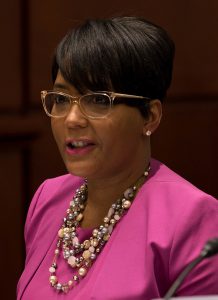 Reminiscent of Upton Sinclair’s work in a meatpacking plant before writing The Jungle (1906), Georgetown law professor Rosa Brooks became a policewoman for five years to research her book Tangled Up In Blue: Policing in the American City (2021). She found that police, on average, are as compassionate as the rest of the population but that they’re being asked to do too much, alternating between social worker, medic, warrior, and mediator in one ten-hour shift — all jobs few people excel at on their own. Post-George Floyd, the idea of abolishing the police was a naive and unrealistic knee-jerk reaction, but leaders like congressman Ritchie Torres (D-NY) and Houston and Atlanta mayors Sylvester Turner and Keisha Lance Bottoms (right) reframed defund the police into re-organizing their personnel and/or requesting more funding for social workers. Most people in poor neighborhoods want better, rather than less, policing. Ex-police officer Eric Adams won New York City’s 2021 ranked-choice Democratic primary mayoral race promising reform while still being tough on crime.
Reminiscent of Upton Sinclair’s work in a meatpacking plant before writing The Jungle (1906), Georgetown law professor Rosa Brooks became a policewoman for five years to research her book Tangled Up In Blue: Policing in the American City (2021). She found that police, on average, are as compassionate as the rest of the population but that they’re being asked to do too much, alternating between social worker, medic, warrior, and mediator in one ten-hour shift — all jobs few people excel at on their own. Post-George Floyd, the idea of abolishing the police was a naive and unrealistic knee-jerk reaction, but leaders like congressman Ritchie Torres (D-NY) and Houston and Atlanta mayors Sylvester Turner and Keisha Lance Bottoms (right) reframed defund the police into re-organizing their personnel and/or requesting more funding for social workers. Most people in poor neighborhoods want better, rather than less, policing. Ex-police officer Eric Adams won New York City’s 2021 ranked-choice Democratic primary mayoral race promising reform while still being tough on crime.
Because local law enforcement mostly falls under the Tenth Amendment, with occasional prodding from the Justice Department, police reform varied widely among cities and states over the last half century. Some cities improved things by putting more black police on the streets in inner-city neighborhoods. Where possible, precincts partnered officers of different races, as lampooned on the sitcom Sanford and Son (1972-77). In Newark, NJ, black voters took advantage of their voting rights to get on the city council, improving community-police relations. But after the 1967 Detroit riots, middle-class Whites abandoned their inner-city homes and businesses altogether in a dramatic example of White Flight and the resulting doughnut effect, whereby a ring of prosperous white suburbs surrounds a decaying core.
One constructive step forward was police wearing body cameras. In Rialto, California complaints against police dropped 88% once officers wore cameras. In 1993, two years after the Rodney King beating, Los Angeles approached the Justice Department for ideas about how to improve community relations. Their resulting consent decree guidelines were similar to those arranged in other cities like Oakland, New Orleans, and Albuquerque. They usually include mandatory body cameras, biracial partners on patrol, restrictions against arresting whole neighborhoods full of young, loitering, black men to sort out later at the station, and, in Los Angeles, taking social service workers along on calls involving mentally ill suspects. In 2016, Ferguson and Baltimore agreed to consent decrees but, in 2017, Attorney General Jeff Sessions advised local police departments against using such guidelines to reform their departments and, on his last day in office in 2018, issued a memo prohibiting the DOJ from working with departments on general policy issues. Donald Trump received muted applause from a group of Long Island police officers in 2018 when he seemed to encourage the procedure used in Freddie Gray’s arrest: “when you see these thugs being thrown into the back of a paddy wagon, you just see them thrown in — rough — I said, ‘Please don’t be too nice.'” He went on to advise against protecting suspects’ heads when they’re being loaded into squad cars.
Two other things will likely have to change before America improves on its record of disproportionate police brutality toward minorities. One is that police unions will have to be more transparent with the public on releasing records of officer misconduct. Chauvin, who held his knee on George Floyd’s neck, had a higher-than-average number of complaints on his record, as did his partner Tou Thao. Second, courts will have to reverse their longstanding policies of legal immunity for officers. On murder cases, at least, that process is already underway as eight officers, including Chauvin, have been convicted since 2014. Such immunity was originally intended to deflect frivolous lawsuits but can be used as cover to abuse civilians. A bundle of nine cases challenging qualified immunity doctrine seemed headed to the Supreme Court in 2020 but they refused to hear the cases amid that summer’s racial turmoil. Judge Clarence Thomas expressed interest in hearing them.
As Congress considered reversing the immunity doctrine and outlawing choke-holds and no-knock warrants in the wake of Taylor and Floyd’s deaths, President Trump grabbed the low-hanging fruit and issued an executive order banning choke-holds where they weren’t already (except when an officer’s life was endangered), advising that social workers accompany police in some situations, and creating a database to track officers with excessive use-of-force complaints. Trump opposed overturning the immunity doctrine, though. If Congress eventually bolsters the temporary executive order with legislation, that will transfer considerable state/local power over policing to the national government. That will be the states’ fault for not fixing the problems themselves but, as of 2021, many states were already overturning their immunity doctrines. Congress is currently debating a police reform bill named for George Floyd.
Black Power
As Detroit illustrated during WWII and the late 1960s, northern Blacks were less likely to accept being attacked by dogs and fire hoses without fighting back than their southern counterparts. The Black Panthers, originating in Oakland, trained militarily, vowing to defend themselves if attacked by white police and to keep black drug dealers off the streets. The leftist organization saw both racial violence and drug abuse as offshoots of capitalism. The sight of Black Panthers policing the streets motivated the NRA to back the Mulford Act disallowing open carry in California, signed by Governor Ronald Reagan (R).
The Black Power movement didn’t ally with liberal Whites or seek integration. Like racism as a whole, Whites didn’t have a monopoly on favoring segregation, whether it be in neighborhoods, schools, or relationships. Loving v. Virginia was unpopular in many quarters and jurors in the aforesaid O.J. case expressed disapproval, post-trial, about Nicole Simpson being white. Followers of the Nation of Islam, an American branch of Islam that emerged in Detroit in the 1930s, endorsed the same segregationist policies as their white oppressors. The NOI’s apostle, Elijah Muhammad, turned traditional racism around, arguing that Whites were devils invented by an evil black scientist named Yakub 6,600 years ago. As a young man (he softened his stance later), boxer and NOI convert Muhammad Ali said, “a black man should be killed for messing around with a white woman.”
Elijah Muhammad’s most famous follower other than Ali was Malcolm Little, later Malcolm X, a young ex-con from Omaha. Malcolm said “Black people are angry and I’m the angriest,” calling the March on Washington the “Farce on Washington.” In a 1963 speech at Michigan State, Malcolm likened himself to an antebellum field negro as opposed to the more cooperative “Uncle Tom” house negro, criticizing their 20th-century analogs for speaking and dressing white, serving in the American military, and buying into American history as “our history.” Malcolm is pictured below in a rare 1964 encounter with MLK, whose pacifist tactics he disagreed with, sometimes respectfully (he told King’s wife, Coretta, that he admired her husband but was there in case his peaceful revolution fell short). Three Nation of Islam members likely killed Malcolm X after he converted to Sunni Islam on a Hajj (pilgrimage) to Mecca, Saudi Arabia in 1964 and disavowed segregation and racism toward all Whites. There’s still no consensus as to who assassinated Malcolm.
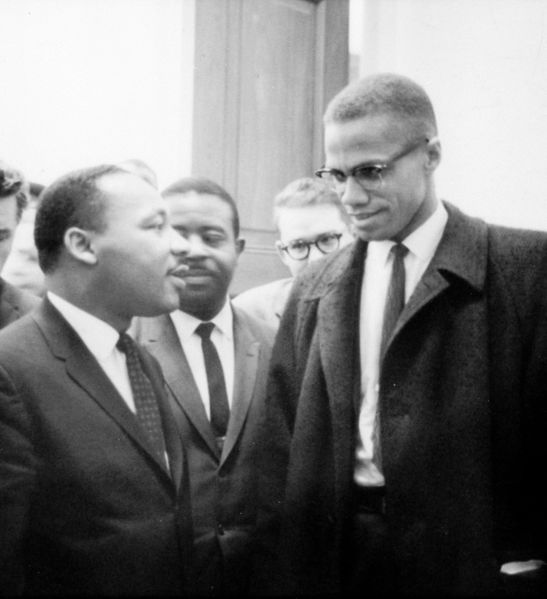
Martin Luther King, Jr. & Malcolm X @ the 1964 Senate Hearing On Civil Rights Bill, Library of Congress
Young Blacks attracted to the religion dropped their given (slave) names and embraced African culture and ethnic pride. The Nation of Islam included famous athletes like boxer Muhammad Ali (Cassius Clay) and basketball player Kareem Abdul-Jabbar (Lew Alcindor). The related Black Power movement included non-Muslims like singer James Brown, Olympic runners Tommie Smith (gold) and John Carlos (bronze) — giving the Black Power Salute on the victory stand at the 1968 Mexico City Games (lower right) — and football player Jim Brown. Brown, still considered by most, including himself, to be the best running back in history, retired young from the Cleveland Browns, moving to Hollywood to take on lead roles opposite white females like starlet Raquel Welch. He broke down the same barriers nationally that Barbara Smith Conrad tried to on stage at the University of Texas. After his acting career, Brown worked into the 21st-century counseling and rehabilitating gang members.
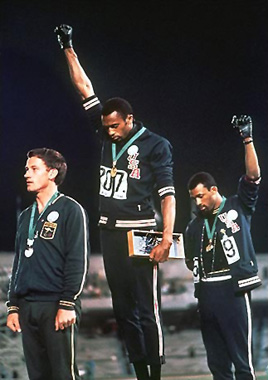
Tommie Smith (center) & John Carlos (right) @ Mexico City Olympics 200m Medal Stand, 1968, Raising Black Power Salute. Australian Runner-Up Peter Norman’s Support for Smith & Carlos Cost HIm an Invitation to 1972 Olympic Trials.
Black Power never resulted in the substantive political changes of the non-violent movement led by Martin Luther King and others, partly because much of the “low-hanging fruit” had already been plucked by the mid-1960s in terms of voting rights and non-discrimination laws. Moreover, the nature of the movement would’ve made it difficult for its leaders to work in tandem with progressive Whites or appeal to white voters. White liberal politicians were put off by this “Negro revolution” and conservatives like George Wallace and Richard Nixon had a field day playing to anxiety over militant activism. Black Power nonetheless had an impact on society and popular culture, morphing into the more mainstream “black is beautiful” of African clothing, variety shows Soul! and Soul Train, and “blaxploitation” films like Shaft (1971). As president, Nixon got Ellis Haizlip’s Soul! cancelled on PBS, but Black Power taught young African Americans that they didn’t need to knock themselves out trying to be white; they could be proud of their heritage. UT historian Peniel E. Joseph credited Malcolm X with “turn[ing] negroes into black people.”
Joseph’s research narrows the gap between the traditional “good cop [MLK], bad cop [Malcolm]” interpretation of the two leaders in light of Malcolm’s transformation in the last year of his life and King’s increasing radicalism toward the end of his life, as he grew skeptical about the Great Society reforms he’d helped bring about and critical of American imperialism abroad (see MLK’s 1967 Riverside Church speech). Joseph wrote that while King avoided criticizing Black Power, he argued in Where Do We Go From Here: Chaos Or Community? (1967) that it “grew out of a despair and hopelessness that made it rely on threats of violence that sapped its potential moral and political strength” and that “racial separatism ignored black people’s need for coalitions strong enough to challenge forms of oppression that transcended race.”
Differences of opinion among followers of King and Black Panthers represented the diversity of opinion among American Blacks, just as the aforementioned debates concerning critical race theory do today. People often talk of other races in terms of how “those people” act or what “those people” want. In this case, why didn’t “those people” work together? But there are no those people. Think of your own race. Do you agree with everyone in that group? Does your “race” even have clear boundaries with other races in terms of DNA and physical appearance? Why don’t white conservatives and white liberals work together? Entire ethnic groups don’t stand for a clear, definable ideology or purpose, and agreed-upon individuals or organizations rarely lead movements as broad as civil rights.
Hispanics
The black Civil Rights Movement lost momentum with the twin assassinations of Malcolm X in 1965 and Martin Luther King in 1968. King’s killer was white porn director and escaped convict James Earl Ray, who hoped George Wallace would win the presidency and pardon him. By then, though, the movement had impacted the whole society, including other racial minorities. Many of the white founders of the Free Speech Movement at Cal-Berkeley in 1964, that kicked off the protests against the Vietnam War, were veterans of the Freedom Summer in Mississippi. Women’s activists like NOW were likewise inspired. Black protests also sparked and influenced similar movements among Mexican Americans and American Indians. Both groups obviously had histories of their own dating back centuries, but they borrowed tactics from the black movement to affect positive change from the 1950s through the 1970s. America was in one of its self-examining phases and many groups seized on the window of opportunity.
Hispanics were the original European inhabitants of the American Southwest, then lost political control with Texas Independence and the Mexican War of 1846-48. In the early 20th century, especially when the Mexican Revolution of the 1910s uprooted many, workers migrated to the U.S. for jobs in agriculture, railroads, mining, and construction. Mexican Americans basically built modern Los Angeles and California’s aqueduct system. Centered around the historic Plaza District in central L.A., where Californios had lived for centuries, Mexican Angelinos worked manual labor and in bakeries, restaurants, pharmacies, and movie industry.
Across the country, Whites extended similar patterns of segregation and discrimination as that aimed at Blacks to Mexican Americans, especially as they moved north to take factory jobs during World War I. A pattern emerged where Anglos welcomed Mexican workers when they needed them and pushed them back across the border when they didn’t. Hundreds of thousands of Mexicans were deported during the Great Depression of the 1930s when jobs dried up first for minorities. Targeted by President Herbert Hoover’s Secretary of Labor, James J. Davis, many Mexicans fled the country while those that stayed laid low to avoid detection. When jobs opened up during WWII, the U.S. government welcomed Mexicans through its Bracero Program, but when jobs dried up after the war they deported them in the overlapping and crudely named Operation Wetback.
World War II ignited a new phase of Hispanic civil rights activism, the same way it did with Blacks, as Latinos fought in large numbers. Dr. Hector P. Garcia formed the American GI Forum to protest discrimination in veteran benefits, but it became the fulcrum for a broader movement. Garcia actually backed Operation Wetback initially, as a way to distinguish established Mexican Americans from temporary Mexican migrant workers, though he changed his mind when he saw how the workers were profiled and harassed.
Another interesting note about WWII symbolizes the resistance among Whites to accepting Hispanics on equal terms. The greatest individual hero among all American forces was Guy Gabaldon, who captured over 1500 Japanese single-handedly on Saipan in 1944 (800 in one day) while killing 33. Raised by Japanese-American foster parents in Los Angeles, Gabaldon persuaded many soldiers to leave their caves and pillboxes and surrender. In 1960, Allied Artists made a movie about his exploits called Hell to Eternity but used a 6-foot Anglo to play the 5’4″ Angelino.
In the mid-20th century, black and Hispanic civil rights movements reinforced each other. With the help of organizers like Texan Willie Velasquez, Hispanics were effective in using the vote to gain control over local councils and school boards. Forming organizations like the Southwest Voter Registration Education Project, they utilized the 1965 Voting Rights Act to sue in courts and push back against discriminatory gerrymandering that minimized their electoral influence.
Like the black civil rights movement, Hispanic leaders didn’t follow a common script. Some, like Texas Congressman Henry B. González, promoted gradualism and assimilation while others, like Raza Unida leader José Ángel Gutiérrez of Crystal City, Texas, were more militant. Many younger Hispanics embraced a movement of their own roughly similar to Black Power: the Chicano movement, based on the Indian word Mexica as opposed to the Spanish word Aztec (it was originally a derogatory term). They embraced rather than minimized the Indian part of their ancestry. They walked out of classes in East Los Angeles and San Antonio, demanding Hispanic representation among school administrators and the inclusion of Mexican-American history in curricula. In New York and Chicago, leftist Puerto Ricans formed the Young Lords, similar to the Black Panthers, that advocated for school breakfast programs and improved health care and sanitation for working-class Hispanics. When cities refused to collect garbage in minority neighborhoods, they tried to do it themselves.
Other Hispanics borrowed from Gandhi’s idea of non-violent protest. Cesar Chavez and Dolores Huerta used boycotts, most famously of grapes, to help organize Mexican and Mexican-American migrant workers and get carcinogenic pesticides banned in the fields of California and the Southwest. Filipino-Americans, led by activist Larry Itliong, joined Chavez and Huerta in their crusade. Like many civil rights leaders, Itliong and Chavez were WWII veterans. And like Martin Luther King in Alabama, Chavez led a long 300-mile march from his hometown of Delano, California to the state capital in Sacramento that swelled to 10k protesters. Finally, like King, Chavez and Huerta worked with cooperative white politicians like Robert F. Kennedy, who helped defend the right of California farmworkers to protest peacefully. Chavez and Huerta’s movement ended child labor in the fields and led to the first farm worker contracts. The most influential protests were in California and Texas. As you read above, Hispanic organizations brought suit in the game-changing Hernandez v. Texas case of 1954 and forged a decades-long alliance with Lyndon Johnson because of the Longoria Affair.
Red Power
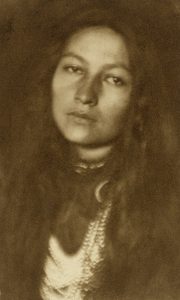 Despite the relatively xenophobic and racist attitude of the 1920s, American Indians won citizenship with the 1924 Indian Citizenship Act, a year after SCOTUS denied citizenship to Indian Americans (U.S. v. Bhagat Singh Thind). A key activist in winning citizenship was journalist, writer, musician, and educator Zitkála-Šá (aka Gertrude Simmons Bonnin) of the Yankton Dakota Sioux tribe (right). Initially, citizenship did not confer voting rights to those living on reservations for local and state elections. During the New Deal, the 1934 Indian Reorganization Act encouraged tribes to self-govern and granted them the right to manage their own lands.
Despite the relatively xenophobic and racist attitude of the 1920s, American Indians won citizenship with the 1924 Indian Citizenship Act, a year after SCOTUS denied citizenship to Indian Americans (U.S. v. Bhagat Singh Thind). A key activist in winning citizenship was journalist, writer, musician, and educator Zitkála-Šá (aka Gertrude Simmons Bonnin) of the Yankton Dakota Sioux tribe (right). Initially, citizenship did not confer voting rights to those living on reservations for local and state elections. During the New Deal, the 1934 Indian Reorganization Act encouraged tribes to self-govern and granted them the right to manage their own lands.
In the 1960s, Native Americans embraced their indigenous cultures in the same ways similar to the Black Power and Chicano movements. Indians also used passive resistance like sit-ins and fish-ins to push back on federal encroachment for the first time since the 1930s. The United Indians of All Tribes, a voice of the Red Power movement, took over the defunct Alcatraz prison in San Francisco Bay for nineteen months from 1969-71. They demanded reparations and that they be given the right to rehabilitate the facility per the 1868 Laramie Treaty that all abandoned federal facilities or lands defaulted to Indians.
Their occupation failed to win them Alcatraz but succeeded in another significant way. During the occupation, President Nixon granted American Indians increased rights to self-determination, namely the right to run their own affairs on reservations. The standoff ended the policy of assimilation the government had been forcing on Native Americans since the 1940s. The Alcatraz Occupation also inspired similar actions such as the takeover of the Mayflower II on Thanksgiving Day 1970, brief occupations of Mount Rushmore and the Department of Interior, the 1972 Trail of Broken Treaties, and a 71-day standoff in 1973 between Oglala Sioux and federal authorities at Wounded Knee, on the Pine Ridge Reservation in South Dakota. The American Indian Movement (AIM) led many of the protests.
Today, Indian reservations are plagued by alcoholism and worse poverty overall than inner-city ghettos. It’s nearly impossible to get mortgages because banks require homes as collateral against loans in case of foreclosures and it’s illegal to seize property off reservations. Self-rule has allowed tribes to improve their educational prospects with colleges, and casinos and occasional mineral rights offer some subsidies to offset the grinding poverty and lack of job prospects.
LGBTQ Rights
Gays were treated as mentally ill predators in America and depicted as such in cautionary films children saw in school. Homophobia was the norm and Hollywood, restricted by the Motion Picture Production Code, depicted gays as depressed and suicidal except for thinly veiled references subtle enough to escape detection. Television also kept its depiction of homosexual characters barely closeted on shows like Bewitched with Paul Lynde prior to Billy Crystal’s character on Soap (1977-81). Musician Elton John “came out” as bisexual in a 1976 Rolling Stone interview. Mainstream society’s primary angle of criticism was that homosexual relationships tended to be transient instead of the long-term commitments ideally characterized by heterosexual marriage. Many gays stayed in unhappy heterosexual marriages while those that came out gravitated toward big cities. The situation wasn’t much better in cities than it was in small-town America, except that cities allowed for greater anonymity. Other gays protested against discrimination after WWII, including Army geographer Frank Kameny. Like others, Kameny lost his job because of his sexual orientation, but he fought back in the courts, organized protests in front of the White House, and he and his followers began to challenge psychiatrists labeling gays as mentally ill. In 1953, President Eisenhower denied homosexuals security clearance in government posts. For that reason, Barney Frank, who later became a prominent Congressman (D-MA) and key player in the financial meltdown of 2007-09, stayed “in the closet” as a young politician. Frank called Ike’s action one of the most damaging federal directives ever.
In New York, only paying off Mafia racketeers bought gays the necessary protection to socialize in their own segregated clubs. At the Stonewall nightclub in New York’s Greenwich Village, a police raid segued into a full-blown riot in 1969. It was the first such raid when gays fought back against police brutality. The Stonewall Riot led to more peaceful protests and marches across the city, raising public awareness of the discrimination homosexuals faced. The metonym Stonewall has come to mark the beginning of a worldwide Gay Rights movement, though it began earlier with activists like Kameny.
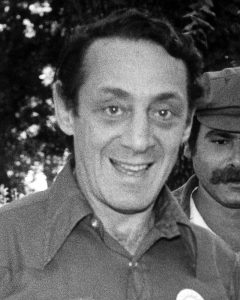 San Francisco was one staging area for the Pacific War in the 1940s. When the military discharged homosexuals during and after WWII, many stayed in the city, especially the Castro District, because it was more tolerant than their hometowns. There, for the first time anywhere in American history, Gays openly celebrated their identity, inspired by and roughly simultaneous to the Black Power, Chicano, and Red Power movements. Veteran and camera store owner Harvey Milk (right) led the movement. In 1978, San Francisco councilman Dan White, who opposed gay rights, assassinated mayor George Moscone and fellow councilman Milk, the first openly gay elected official in U.S. history. The jury reduced White’s charge from first-degree murder to voluntary manslaughter because they sympathized with the stress he was under when he resigned his post and Moscone was unwilling to automatically re-appoint him when he changed his mind. White’s counsel also argued that eating too much junk food (aka a “Twinkie™ defense”) rendered him unable to cope psychologically, though he never sought psychiatric care during his five-year prison sentence (he later committed suicide). The verdict caused rioting but, in the long run, White’s violence undermined the moral authority of the anti-gay movement. Meanwhile, Milk’s spirit lives on in the familiar rainbow flag that he helped create, which represents inclusion and equality.
San Francisco was one staging area for the Pacific War in the 1940s. When the military discharged homosexuals during and after WWII, many stayed in the city, especially the Castro District, because it was more tolerant than their hometowns. There, for the first time anywhere in American history, Gays openly celebrated their identity, inspired by and roughly simultaneous to the Black Power, Chicano, and Red Power movements. Veteran and camera store owner Harvey Milk (right) led the movement. In 1978, San Francisco councilman Dan White, who opposed gay rights, assassinated mayor George Moscone and fellow councilman Milk, the first openly gay elected official in U.S. history. The jury reduced White’s charge from first-degree murder to voluntary manslaughter because they sympathized with the stress he was under when he resigned his post and Moscone was unwilling to automatically re-appoint him when he changed his mind. White’s counsel also argued that eating too much junk food (aka a “Twinkie™ defense”) rendered him unable to cope psychologically, though he never sought psychiatric care during his five-year prison sentence (he later committed suicide). The verdict caused rioting but, in the long run, White’s violence undermined the moral authority of the anti-gay movement. Meanwhile, Milk’s spirit lives on in the familiar rainbow flag that he helped create, which represents inclusion and equality.
In recent decades, citizens and politicians continue to debate whether America as a whole should ever grant lesbian, gay, bisexual and transgender Americans, or LGBT, full equality under the law. Strategic focus shifted to the right to create and support families. This 1989 essay by Andrew Sullivan in New Republic laid out the conservative case for same-sex marriage. Aside from same-sex marriage, modern debates center on whether gay couples should enjoy the same economic and legal advantages of traditional marriages at the federal level, including dependent benefits, preferential tax treatment, etc. Married couples have over 1100 federal benefits and burdens. The Defense of Marriage Act (DOMA) from 1996 allowed national government agencies like the IRS to not recognize gay marriages of couples, even those who were legally married in U.S. states or other countries. A woman named Edith Windsor had to pay over $363k in estate taxes that she otherwise wouldn’t have if her partner of 44 years had been a man (the couple legally married in Canada in 2007 and resided in New York, which now recognizes same-sex marriages).
Hawaiian courts shot down a gay marriage ban in that state in 1993. In Lawrence & Garner v. Texas (2003) the Supreme Court overturned a law banning gay sex in Texas. On the same date ten years later, June 26, 2013, the Court shot down DOMA in U.S. v. Windsor, citing its violation of the 5th Amendment right to due process of law. The crucial swing vote in the 5-4 decision came from conservative judge Anthony Kennedy, a Reagan appointee, who described DOMA as a “bare congressional desire to harm a politically unpopular class” (Bill Clinton signed the bipartisan bill). The Supreme Court stopped short of ruling that DOMA violated the Fourteenth Amendment equal protection clause the way they did in Roe vs. Wade (1973) with abortion. If they had, that would’ve effectively legalized gay marriage in all states. The same day as the Windsor case, the Court did not overturn a California court’s reversal of Proposition 8 (2008) that defined marriage exclusively as between a man and woman.
In the 2008 presidential campaign, the Republican field all opposed same-sex marriage and Democrats Hillary Clinton and Barack Obama at least pretended that they did. Obama waited until he was re-elected for a second term in 2012 and then threw his support behind it. But Americans’ attitudes shifted as fast as they have on any social issue. This wasn’t just a generational shift; people changed their minds. By 2014, many more states were legalizing gay marriage. However, that year the 6th Circuit Court of Appeals ruled that four states in its circuit — Ohio, Kentucky, Michigan and Tennessee — were allowed to keep it illegal. Couples from three of those states bundled together a Fourteenth Amendment challenge that reached the Supreme Court, appealing to a combination of the Fourteenth’s right to equal protection and its due process clause.
They were victorious in Obergefell v. Hodges (June 26, 2015), that legalized gay marriage in the remaining states. Again, the normally conservative judge Kennedy voted in favor of the plaintiff Obergefell, swinging the vote 5-4. Citing an amicus curiae brief from the Organization of American Historians (OAH), he argued that marital conventions have been evolving throughout history, countering the dissenting arguments for tradition. Dissenting judges, including Chief Justice John Roberts (Bush 43) and Antonin Scalia (Reagan), said the Court was legislating without consent of the people — a “putsch” in Scalia’s words — especially with their evolving definition of the Fourteenth Amendment’s right to due process. But the case came after decades of legislation and initiatives from elected officials and voters and multiple cases bouncing around the lower courts — exactly what the Supreme Court traditionally rules on. If the judges really thought it was a purely legislative matter then they shouldn’t have taken the case. The Court can’t accept a case then rig it by arguing that ruling against the plaintiff is their business but ruling in his favor isn’t. The real opposition to same-sex marriage doesn’t come from the Constitution, but rather tradition and/or religion.
Another line of criticism from the dissenting judges was that marriage is only for having children, though that ignores that it’s legal for married heterosexual couples to not have children. African-American Clarence Thomas (Bush 41) furrowed some brows when he wrote that “just as slaves didn’t lose their dignity because the government allowed them to be enslaved…and those [Japanese] held in internment camps did not lose their dignity because the government confined them… [gays] do not lose their dignity because government denies them benefits…the government cannot bestow dignity and it cannot take it away.” Had the case gone against Obergefell, this probably wouldn’t have been the ideal passage to showcase in the Court’s majority opinion — the notion that discrimination is good because victims still maintain their dignity.
Better to stick to the ambiguity of the Fourteenth’s due process clause. Said Kennedy, in what Scalia derided as pretentious and straining-to-be-memorable: “The nature of injustice is that we may not see it in our own times.” Scalia scoffed that “freedom of intimacy is abridged rather than expanded by marriage. Ask the nearest hippie.” That’s a roundabout argument but, to the extent that it makes any sense, the implication would be that we should outlaw marriage because some people find it confining. If someone is arguing that you shouldn’t have the right to marry because in their opinion you shouldn’t want to marry anyway, then why would that apply to one group (homosexuals) and not another (heterosexuals)?
That brings us back to the Fourteenth Amendment’s guarantee of equal protection under the law. Should that be overridden in this case by religious or cultural convention? That’s the crux of the Obergefell case and a thin majority answered no. One accurate point the dissenting judges made is that this does indeed open up the question of polygamous marriage. To wit: based on Reynolds v. U.S. (1878) polygamy’s ban rests on historical convention, in that case dating back to English common law, a similar justification to what the minority supported and majority challenged on bans against same-sex marriage. The difference is that a broad majority of the public opposes polygamy whereas public opinion had shifted in the case of gay marriage by 2015.
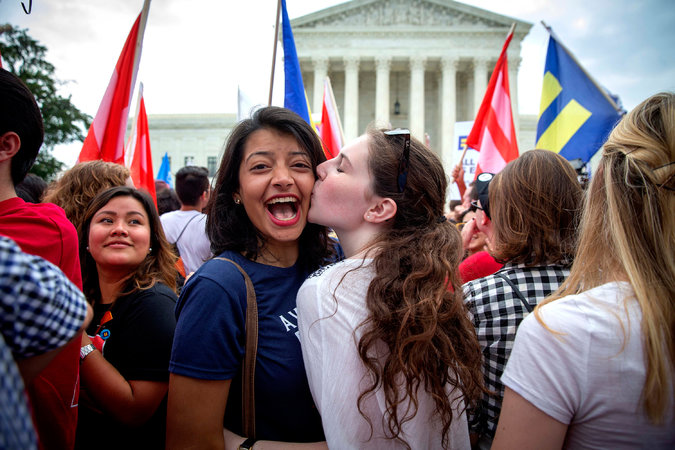
Couple Outside Supreme Court After Obergefell v. Hodges Ruling, June 2015, Photo by Doug Mills, New York Times
One irony of our current debate over same-sex marriage is the longstanding criticism of gay relationships as being merely short-term. Why would someone who opposes homosexuality on those particular grounds oppose gay marriage? A more common angle of opposition today is to argue that having to tolerate homosexuals or treat them with equality violates one’s First Amendment right to religious freedom. Judge Thomas wrote in his Obergefell dissent that the majority’s “short-circuiting of the process [democracy] has potentially ruinous consequences for religious liberty.” With gay marriage legal across the land, attention shifts to whether businesses can lean on the First Amendment to discriminate against LGBT customers. In 2017, the Court heard such a case in Masterpiece Cakeshop v. Colorado Civil Rights Commission, in which it shot down a lower-court order for the bakery to serve a gay couple but did not issue a broad ruling concerning the First or Fourteenth Amendment. There won’t be any debate over whether or not ministers or churches are compelled to conduct same-sex weddings as they’ve always retained the right of refusal on any grounds.
In June 2020, the Supreme Court ruled 6-3 that the 1964 Civil Rights Act’s ban on sex discrimination also applied to discrimination based on sexual orientation, securing added legal protection for the LGBTQ community.
Gray Panthers
Finally, and least controversially, the Gray Panthers led by Maggie Kuhn advocated on behalf of the elderly, an influential part of the voting electorate. Not only do older Americans vote in greater numbers than other age groups proportionally, but those numbers are due to rise in coming years as Baby Boomers move into retirement. The “Gray Panther” movement led to improved access to public facilities and advocacy groups like AARP (American Association for Retired People) who defend and fight for entitlements like Social Security and Medicare. Regardless of race or sexual orientation, all of us can join AARP unless we check out early. Membership qualifies one for discounts at hotels across the country, among other perquisites. In most areas, senior status also qualifies one for cheaper movie tickets and free college tuition. The 1965 Older Americans Act and other legislation also banned age discrimination in hiring, which has proven difficult to enforce, and provided subsidies for disease prevention and nutritional charities like Meals On Wheels.
During the Civil Rights movement, Gerontology transcended voting and benefits to include a study and reconceptualization of the whole aging process. Just as sociologists defined and debated adolescence more distinctly during the Progressive Era, leading to compulsory education and child labor laws, so too they scrutinized old age more carefully as people began to live longer. Robert Butler, Director of the National Institute On Aging, and Alex Comfort (A Good Age, 1976) wrote about the fears, barriers, myths, stereotypes, and discrimination that accompanied what they called “ageism.” Like other victims of discrimination, the elderly could internalize confining stereotypes, perpetuating them. For these writers, aging wasn’t just physical or mental decline, it was a frame of mind that could be improved upon and relished, leading to popular phrases like “sixty…the new fifty” and the “golden years.”
Affirmative Action
A key fault line of controversy regarding civil rights today revolves around affirmative action programs mandating the hiring or admission of minorities commensurate with that given groups’ representation in broader demographics (e.g., if group A constitutes 10% of the population, they should hold 10% of the jobs at that institution). Affirmative action first applied to federal contracts under the Kennedy and Johnson administrations. In a commencement address at Howard University in 1965, LBJ explained his justification for affirmative action:
“You do not take a person who, for years, has been hobbled by chains and liberate him. Bring him up to the starting line of a race and then say, you are free to compete with all the others. And still, justly believe that you have been completely fair.” He goes on to say, “This is the next and the more profound stage of the battle for civil rights. We seek not just freedom but opportunity. We seek not just legal equity but human ability, not just equality as a right and a theory but equality as a fact and equality as a result….”
Affirmative action is controversial among both Whites and minorities because it may or may not go a step beyond the fundamental demand of equal treatment. The traditional argument against any demand for equality is that particular groups shouldn’t get special treatment. That was the main line of reasoning against allowing Blacks and Hispanics basic rights — that since there weren’t special laws for Whites, why should there be for anyone else? The inherent flaw in that argument should be readily apparent to all, though it’s still used today from time to time. No one who wants to vote, serve on juries, have a shot at working in the career of their choice, or just simply not be discriminated against, is asking for any special treatment; they’re asking for equal treatment as measured by whatever privileges a given society affords the dominant group. There’s a big difference between special and same insofar as they’re antonyms.
But does affirmative action overstep that demand or blur equality of results with equality of opportunity? Is this one aspect of civil rights where the zero-sum argument isn’t just a fallacy? Critics — according to some, including Martin Luther King — see affirmative action as going too far, in worst-case scenarios resulting in inferior applicants getting preferential treatment and, thus, discriminating against Whites or Asians and lowering overall economic efficiency, on top of being unjust. Minority-owned firms can win no-bid contracts from the government, for instance, artificially raising prices. Originally aimed at Blacks, Hispanics, and American Indians, such programs now cover groups with ancestry in 33 countries. However, King actually supported affirmative action in Why We Can’t Wait (1964), arguing that, because of America’s racist past, Blacks deserved special, compensatory measures. Also, even quota-based affirmative action does not call for white representation to fall below that of their proportional numbers in statewide demographics.
In 1996, Cheryl Hopwood sued the same University of Texas Law School that Heman Sweatt had in the late ’40s, this time for anti-white discrimination that violated her Fourteenth Amendment right to equal protection. Hopwood grew up poor and went to Austin Community College and St. Edward’s University. UT Law denied her application even though her LSAT scores were higher than many Hispanic students they admitted, and some Whites that came from more prestigious schools than St. Ed’s. UT argued that the legislature was pressuring it to admit more Hispanics so that its student demographic would better match that of the state as a whole. While the case didn’t reach the Supreme Court, the 5th District Court ruled that UT could no longer use strict race-based quotas in their admissions, though they could continue to consider race as one of several factors. At the same time, many high-performing students from the lower economic quartile are not being matched with prestigious enough schools even when aid and scholarships are available and go unused (see QuestBridge.)
Another complication with affirmative action is that its beneficiaries might feel their achievements are devalued. But without affirmative action, some employers won’t hire any minorities, including those that are equally or better qualified; mere anti-discrimination laws aren’t enough in those cases to ensure fairness. That was true fifty years ago, for sure, and is likely true in at least some cases today. That’s what Kennedy and Johnson realized in the early 1960s, leading them to endorse affirmative action as a means to restrict discrimination against equally or better-qualified minorities. Affirmative action proponents also argue that tilting the playing field against Whites or Asians isn’t malicious or intended to keep them down, whereas past discrimination against Blacks and Hispanics was. Today, many successful minorities, including conservatives, attribute their success to affirmative action and offer amicus curiae testimony on its behalf in court cases.
While there’s less outright discrimination against qualified minorities today, we’re not out of the woods yet. Even if we were out of the woods in terms of white-on-minority discrimination, the same problem could potentially emerge with any group of employers vis-à-vis any other group. There’s also something to be said, especially at schools, on behalf of diversity for its own sake. Today, absent any enrollment caps, Asians would be the majority at many leading colleges even though they comprise less than 6% of the American population. That’s already the case at Stuyvesant High in New York, a magnet school that bases admissions purely on merit. Would going to Harvard or Cal-Berkeley be an entirely different experience if 70-80% of the students were Asian? Would their degrees really mean the same thing given that friendships and job connections would be spread less evenly across the population?
Or, should we just quit trying to engineer society and base admissions and hirings purely on merit? Many people that satisfy affirmative action numbers or qualify for schools as legacy preferences (whose parents or relatives attended) are candidates that would’ve otherwise been admitted on merit anyway, but some aren’t. Legacy preferences are warping admissions numbers even more than affirmative action as time goes by because more and more alumni have children applying to the schools they attended. In 2017, 33% of Harvard’s incoming class got in only because of legacy admissions, rather than merit. Texas A&M, however, banned legacy admissions in 2004 under President Robert Gates. Why does it persist elsewhere? If their child is rejected, alumni are less likely to donate money, just as (collectively) they’re less likely to if the football team doesn’t win.
Others would argue, as did MLK, on behalf of affirmative action that a compensatory adjustment is necessary to offset the residual impact of past discrimination. Ibram X. Kendi said “the only remedy to past discrimination is present discrimination…in order to treat some people equally, we must treat them differently.” There’s no doubt that we start out on uneven playing fields of opportunity. But, aside from the fundamental question of government’s role in rectifying injustice, the uneven fields raise thorny questions as to who is disadvantaged and who isn’t, and for how long? If the government does have such a role, for instance, should race trump class? Is an upper-middle-class minority with two supportive parents worse off in the 21st century than a poor white kid from an unstable home? Once one opens that can of worms, other factors enter in beside measurable categories like race and class.
As a student, voter, citizen and potential parent you’ll want to consider, for instance, comparing racial versus socioeconomic affirmative action and admissions policies like UT’s 8% rule. The Supreme Court recently upheld UT’s policy of automatically admitting the top 10% of graduates from any high school in Texas (now 8%). In 2013, plaintiff and 2008 Austin High graduate Abigail Fisher won 7-1 in Fisher v. The University of Texas, with most of the judges concurring that the 10% rule didn’t meet their criterion of strict judicial scrutiny; however the court upheld the 8% rule in a second Fisher v. The University of Texas in 2016. Fisher argued that UT violated her Fourteenth Amendment right to equal protection, but in “Fisher II” the Court ruled that UT was within the law by allowing in the top 8% of any graduating class in the state. The rule is intended to level the playing field by offsetting the inequality of Texas public schools — a sort of end-around to the demise of quota-based affirmative action — and is advantageous to both urban minorities and rural Whites. Meanwhile, legacy admissions at colleges are a barrier to meritocratic upward mobility.
 Conclusion
Conclusion
It’s impossible to cover all the discrimination 20th century Americans faced and what they did about it in one short chapter, but this isn’t intended as a laundry list or scorecard. Many students today don’t see much overt discrimination around them and wonder why we have to obsess over the topic in history books. I hope I’ve written enough here to underscore that when it comes to race, obsession cuts both ways, and that’s putting it generously. No one is arguing that any minority groups are perfect or above racism themselves, two common complaints from white students. In fact, we experience a lot of racism between various minorities today. And even among individuals, there are no pure saints. The old adage that little kids aren’t born racists and that their parents just teach them to be, is, unfortunately, not really the case. After hundreds of thousands of years of evolution, modern human beings are born hard-wired to trust and favor people that look like them and distrust and fear those that don’t. Studies have shown that to be the case among toddlers and adults alike, of all races, including those that confidently report after their study that they treated everyone equally. If you’re interested, try the Implicit Association Test (IAT).
What can we do about it? Like other topics in other chapters, history is the key to understanding the current world around you and the future you’ll live into. Simply condemning for its own sake America’s long history of discriminating against nearly everyone is a waste of time at this point — a mere exercise in applying today’s standards to yesterday. But understanding our past can help us explain the present and confront challenges as we move forward. We need to understand that racism evolved because a rational fear of outsiders favored survival, but also that it no longer serves any useful purpose in modern society. All of us were born with it and all of us have the capacity to transcend it.
Until recently, we robbed ourselves by needlessly watering down and warping our society through outdated tribalism and chauvinism. John Kennedy put it best when he said, of minorities and Whites, “We owe them — and we owe ourselves — a better society.” Racism isn’t any good for the racist, let alone the victim. Take baseball as a microcosm. Let’s say we divide all of today’s pros into four separate leagues — Whites, Blacks, Hispanics, and Asians – each league with the same number of teams and roster sizes as the major leagues. Think of how inferior each league would be compared to the current integrated league, that combines the most talented players from each group. Sure enough, one reason some players opposed integration in 1947 was their fear that roster spots would be tougher to come by. They were the honest ones. If others really thought, as they claimed, that Blacks, Hispanics, and Asians were incapable of playing well, then what was there to fear? If you really think others are inferior, then why support barriers that would prevent them from competing against you? If you don’t believe that, and there’s no sound biological basis to support racism, then you could see the baseball analogy as representing how we weakened American society for centuries. For all we know, a white supremacist could die tomorrow of a disease we might’ve cured if we hadn’t limited most African Americans to lives of sharecropping after the Civil War. How much potential talent did we waste to protect a social order whose only attributes were “tradition,” an irrational belief in zero-sum class relations, and a petty form of pride?
Today, we see racism ranging from passive and hurtful (e.g., University of Oklahoma Sigma Phi Epsilon video) to outright violence among deranged supremacists (e.g., Dylann Roof) to isolated but consistent cases of police brutality. As of 2021, Anti-Asian violence was on the rise in America because of a cynical and uninformed belief that China deliberately started COVID-19 (NPR). In 2020, white vigilantes seemingly sanctioned by local authorities (at least initially) and Georgia’s stand-your-ground law killed Ahmaud Arbery in cold blood, with one accomplice having the audacity to film it. That same year, three policemen in Wilmington, North Carolina lost their jobs after talking over the radio about “slaughtering n*****s” in a coming civil war. Luckily, most of us have evolved past that. Many of us today live in extended families with mixed marriages and polls show that over 90% of Americans would vote for someone of another race for political office. While the fact that 0% of Americans identify themselves as racist indicates a staggering lack of self-awareness, it also shows a near wholesale shift toward the notion that racism is a bad thing, which wasn’t the case a century ago (when no one bothered prefacing remarks with “I’m not a racist, but…”). It’s encouraging that much of the history you’ve read about above strikes most students today as unjust. Martin Luther King, Jr. verges on secular sainthood today, revered by white conservatives and liberals alike, despite being unpopular when when he was assassinated in 1968. Black Lives Matter was more popular in 2020 than King was in ’68, partly because of his opposition to the Vietnam War and partly because a majority of white Americans saw him as having done more harm than good.
While there’s still much work to be done, Americans have come a long way in a relatively short amount of time. Progress will be an ongoing challenge rather than culminating in lasting triumph. Controversies over law enforcement, incarceration, and voting rights will continue. But in the near future, without better prospects in Central America, racial and civil rights issues will increasingly revolve around and overlap with immigration policy as asylum-seekers flee the drug cartels (Chapters 7 & 21). Politically, voting rights have moved front and center once again, but good turnout can overcome restrictions. If this chapter has seemed long and hard to digest, keep this in perspective: the modern United States is arguably the most diverse major country on Earth, the first major experiment in multi-racial democracy. Progress since a flawed founding in 1776 has been slow and halting. But the modern Civil Rights Movement improved things. A critical balance of Americans — some enthusiastically, some grudgingly, all imperfectly — embraced real democracy.
Optional Reading & Viewing:
Bracero History Archive (UTEP)
Martin Luther King, Jr. Papers Project (Stanford)
National Museum of African American History & Culture (Washington, D.C.)
Ibram X. Kendi, “The End of Denial” (Atlantic, 8.20)
Coleman Hughes Website, Featuring Articles & Conversations With Coleman
Nancy Abudu, “Seven Years After Holder Case, Voter Suppression Permeates the South” (Southern Poverty Law Center, 6.25.20)
Edward Blum, “Justice Roberts Was Right: Things Have Changed In the South” (National Review, 6.25.18)
Wesley Lowery, “Aren’t More White People Than Black People Killed By Police? Yes, But No” (Washington Post, 7.11.16)
Ta-Nehisi Coates, “What O.J. Simpson’s Acquittal Means to Black People,” (Atlantic, 10.16)
Ex-Texas Governor Rick Perry’s Speech On Jesse Washington @ National Press Club (2015)
Negro Motorists’ Green-Book Travel Guide (New York Public Library)
Princess Ojiaku, “Is Everybody A Racist?” (Aeon 3.21.16)
Joel Dinerstein, “White Supremacy & the #ChineseVirus,” (Medium, 5.30.20)
Bonnie Kristian, “Seven Reasons Reasons Police Brutality is Systemic, Not Anecdotal” (American Conservative, 7.2.14)
Haley Price, William Jones & Alina Scott, Violence Against Black People In America: A ClioVis Timeline (UT NEP)
Kyle Longley, “Our Leaders Can Look To Lyndon Johnson To See How To Minimize Damage Today [from rioting]” (Washington Post, 5.31.20)
Dylan Matthews/Heather Anne Thompson, “How Today’s Riots Compare to 1968, Explained By A Historian” (Vox, 6.2.20)
Anna North/Khalil Muhammad, “How Racist Policing Took Over American Cities, Explained By A Historian” (Vox, 6.6.20)
Sarah Brady Siff, “Policing the Police: A Civil Rights Story” (Origins, 5.16)
Julian Go, “The Imperial Origins of American Policing: Militarization & Imperial Feedback in the Early 20th Century” (Am. Journal of Sociology, 3.20)
Aubrey Clayton, “The Statistical Paradox of Police Killings” (Boston Globe, 6.11.20)
Amira Rose Davis, “No More Games: Understanding the Latest Wave of Athletic Activism” (OAH American Historian, 9.20)
Mychal Denzel Smith, “Incremental Change Is A Moral Failure” (Atlantic, 9.20)
John McWhorter “The Virtue Signalers Won’t Change the World” (Atlantic, 12.23.18)
Nell Irvin Painter, “Why White Should Be Capitalized, Too” (Washington Post, 7.22.20)
Dave Davies, “Sum of Us Examines the Hidden Cost of Racism – For Everyone” (NPR, 2.17.21)
Suzanne Nuyen, “Anti-Asian Attacks Rise During Pandemic” (NPR 3.17.21)
Matthew Karp, “History As End: 1619, 1776, and the Politics of the Past” (Harper’s, 7.21)
Optional Supplement: Sports & Music
South African leader Nelson Mandela said that “sport has the power to change the world…it is more powerful than governments in breaking down racial barriers.” And long before Jim Brown and Muhammad Ali, athletes were important in breaking down segregation’s barriers. Most famous was Jackie Robinson’s integration of major league baseball in 1947 with the Brooklyn Dodgers. Their president and general manager, Branch Rickey, pioneered batting helmets, minor league farm systems, spring training facilities, pitching machines and batting cages, but his most famous role was that of social revolutionary. Because of his religious faith and commitment to social justice, Rickey was nicknamed the Mahatma (Sanskrit for “high-souled,” like Gandhi), even though Rickey was a Methodist Christian and Gandhi was a Jain Hindu. Desperate to challenge his cross-town rivals, the Yankees and Giants, and wanting to break down baseball’s color barrier, Rickey tapped into Negro League talent. After World War II, Rickey said that Americans defeated fascism in Germany; now it was time to defeat racism in America.
In Robinson, Rickey was careful to pick a candidate who could succeed on the field, and who would absorb taunts and physical abuse without retaliating, just as the Little Rock 9 was later instructed to do. Jackie was no stranger to civil rights issues, either. During WWII, he was court-martialed for refusing to sit at the back of an Army bus. Robinson was also one of the greatest athletes of the 20th century, earning All-American honors in football, basketball, and track at UCLA. While baseball was arguably his 4th-best sport, he was an exciting second baseman who changed the dynamics of the game, especially on the basepaths. But it was Robinson’s skin color that sent shockwaves across the country. While much has been made of baseball’s segregationist past, its more distinguishing feature is that it was one of the first institutions in the Western world to overcome it. In 1947, virtually nothing in American society was racially integrated, nor had it been since slaves quite living with their owners in 1865. President Truman integrated the military during his 1948 campaign to spite the Dixiecrats, and it fell to the Army and pro sports to lead the way into the second half of the 20th century.
Baseball had a handful of black (Moses Fleetwood Walker) and black Cuban players in its early history but had been strictly segregated for decades by the 1940s. Some of Robinson’s teammates wanted to quit, and road trips were difficult since he wasn’t able to eat in the same restaurants or sleep in the same hotels. Spring Training in Florida was problematic. When the Dodgers did find integrated accommodations, some of his teammates were afraid his skin color would wash off in the pool and get on them. Encouraged by Robinson’s teammate, Dixie Walker, most National League teams threatened to strike if Robinson stepped on the field (the Cubs voted 24 to 1 to strike). However, Rickey and League Commissioner Ford Frick didn’t bow to pressure. Instead, they promised to ban anyone for life who didn’t report to camp. Faced with the prospect of actually working for a living back at the local coal mine or gas station, the players backed down.
Robinson endured spiking, name-calling, and bottles and food being thrown at him, helping to lead the Dodgers to the pennant. Some of his teammates, including native Kentuckian Pee Wee Reese, warmed to him personally. More black players made their way to the majors shortly thereafter (Larry Doby integrated the American League with the Cleveland Indians later that year), with only the Yankees and Red Sox holding out for another decade. The Dodgers took the lead in drafting Blacks and trading away racist Whites like Dixie Walker, and with a handful of black players finally defeated the all-white Yankees in the 1955 World Series. While it’s a bit of a worn-out cliché, the democratic Dodgers were a good fit for their multi-ethnic borough of Brooklyn. In neither case did everyone get along, but they put up with each other well enough to co-exist. After a falling out with ownership, Branch Rickey left to run the Pittsburgh Pirates, where he accelerated the integration of Hispanic players by signing Puerto Rican Roberto Clemente in 1955, another dynamic Hall-of-Famer along with Robinson. The humanitarian Clemente died on Christmas, 1972, flying earthquake relief supplies to the Dominican Republic.
If it seems odd to include sports as part of American history, be mindful of the important role popular culture plays in society. We saw above how important actors like Harry Belafonte and Sidney Poitier were. The same was true of music, with record producers like Jerry Wexler and Ahmet Ertegün of Atlantic Records serving the same role as Branch Rickey in sports. They displaced terms like Jungle Music or Race Records with Rhythm & Blues and introduced black “crossover” musicians like Aretha Franklin and Ray Charle to white audiences. Crooner Frank Sinatra, who called racism “vile,” included Sammy Davis, Jr. as part of his Las Vegas Rat Pack, and recorded with jazz legend Count Basie. Blacks and Whites recorded together at Stax Records in Memphis and Muscle Shoals Studio in Sheffield, Alabama, as well. Elsewhere all-black groups made records for mixed audiences. The most important of these crossover studios was Barry Gordy’s Motown Records, a house basement studio in Detroit. Out the anger and ashes of riot-torn Detroit came Martha & the Vandellas, Smokey Robinson & the Miracles, Dianna Ross & the Supremes, Marvin Gaye, Stevie Wonder, Gladys Knight & the Pips, the Temptations, and the Jackson Five, including Michael Jackson. Together they sold millions of records to white audiences. It’s amazing that such optimistic and inspirational music came out of such a bleak environment. (Today we use the term urban for black in popular music, even though many black Southerners live in the country and many Whites live in cities.)
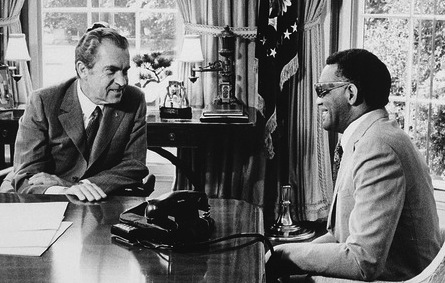
President Nixon Meeting with Ray Charles in the Oval Office, 1972, Richard Nixon Presidential Library
Along with musicians, athletes became the most prominent African Americans many people knew of. When John Kennedy and Richard Nixon ran for president in 1960, they were more concerned with Jackie Robinson’s endorsement than Martin Luther King’s. As strange as it may seem now, Robinson was more famous than King at the time. Kennedy ruined his chance over breakfast with Robinson, when he spent most of the time nervously staring at the floor and never made eye contact. It turns out, JFK had never talked to a black man before. Still, JFK garnered 70% of the black vote. The Kennedy administration also forced pro football’s most racist owner to integrate.
Washington Redskins owner George Preston Marshall insisted on segregation in 1933 after the National Football League (NFL) had allowed black players like Fritz Pollard at its inception in the 1920s. Like a lot of industries, the Great Depression pushed Blacks to the back of the line in the NFL. And, like a lot of industries, WWII forced change. The Cleveland Browns of the upstart All-American Football Conference signed two black players (Bill Willis and Marion Motley) in 1946 and the cross-town NFL Rams left for Los Angeles, recognizing the popularity of their new rival’s owner and coach, Paul Brown (Brown had already integrated football at Ohio State and won a national championship there in 1942). But when the Rams moved to Los Angeles, they encountered a situation similar to when the Houston baseball team, the Colt 45’s, built the Astrodome in 1965. The Rams wanted to play in the public L.A. Coliseum (built for the 1932 Olympics), but the city wouldn’t allow them to unless they integrated. They signed former UCLA stars (and Jackie Robinson teammates) Kenny Washington and Woody Strode. Chicago Bears owner George Halas wanted to sign Washington five years earlier, but Marshall blocked the move. Branch Rickey also owned a Brooklyn football team in the AAFC (also the Dodgers) and he once told Marion Motley that if he hadn’t seen him play for the Cleveland Browns, he might not have signed Robinson to play baseball.
George Preston Marshall remained the last holdout against pro football integration into the early 1960s. At the time, the team was the favorite of white fans in parts of the Upper South, but it was an embarrassment to the Kennedy administration in the early 1960s and black fans were starting to boycott its games. Kennedy’s Secretary of the Interior, Stewart Udall, forced the team to integrate based on its stadium being on public land. The downside of racial integration in pro sports was that it reduced opportunities for Blacks in coaching and management. The Negro Leagues (and other segregated pro leagues) offered opportunities to coach, manage and own sports-related businesses that minorities wouldn’t enjoy again until late in the 20th century.
Similar stories played out in pro basketball, pro hockey, and college sports. The NBA’s New York Knicks briefly signed Japanese-American point guard Wataru Misaka just after WWII (Misaka served in the American occupation of Japan after the war). Earl Lloyd was the first African American to play in the NBA, for the Washington Capitals in 1950, and Willie O’Ree was the first in the NHL, for the Boston Bruins in 1958.
College football didn’t have official segregation policy, but rather “gentlemen’s agreements” that translated into segregation in the South, northern players unable to play in the middle of the field (quarterback, center, linebacker), and northern schools forced to leave their black players behind when the played in the South. That caused problems in bowl games, the biggest of which were in Dallas (Cotton), New Orleans (Sugar) and Miami (Orange). The 1951 San Francisco Dons — one of the greatest college teams ever with six future all-pros and three future Hall of Famers (and future NFL commissioner Pete Rozelle doing public relations) — refused an invitation to play in the Orange Bowl when officials disallowed Ollie Matson and Burl Toler from playing. Unfortunately, USF needed the bowl revenue and dropped its program. Georgia’s governor Marvin Griffin insisted that Georgia Tech not play in the 1956 Sugar Bowl because its opponent, Pitt, had one black player, Bobby Grier. White students protested at the governor’s mansion, burning him in effigy, and Tech defied his orders, playing the game.
College integration was most controversial in traditionally all-white conferences like the Southeast and (old) Southwest. In the SWC, Southern Methodist coach and native Texan Hayden Fry offered a scholarship to black Houstonian Jerry LeVias in 1967. UT and Texas A&M students harassed the running back, holding up lynching ropes and releasing black cats on the field, but those schools followed suit themselves within a couple of years (UT 1969). The main motivation wasn’t so much social justice as winning. West Texas (now UTEP) beat all-white Kentucky in the 1966 NCAA basketball final with five black starters and several champions in prior years (e.g., Cincinnati) fielded three or four black starters.
Legendary Alabama football coach Bear Bryant scheduled a home date with USC (Southern Cal) in 1970, hoping the display of talent by players like Sam “Bam” Cunningham would convince his reluctant alumni, fans, and administration to integrate. After losing 42-21, and giving up 135 yards and two touchdowns to Cunningham, Bryant reputedly shook hands with USC coach John McKay at midfield and said, “Thanks. I think that got the job done.” Bryant’s assistant said Cunningham did more to integrate Alabama in 60 minutes than Martin Luther King had in 20 years, though he might’ve intended that as an insult to MLK. In fact, Alabama had already recruited one black player, Wilbur Jackson, even before the USC game, but Bryant still wanted to underscore his point with alumni. Within a few years, the SEC had a black quarterback at Tennessee named Condredge Holloway. Holloway would’ve played at Alabama, but Bryant wasn’t ready for a black quarterback. In the Big Ten, Iowa started Butch Caldwell at quarterback the same year Holloway broke in (1972), but had already featured Minnesota’s All-American Sandy Stephens (1960) and Michigan State’s Jimmy Raye II (1966) under center.
Today, NASCAR is seen as the last bastion of racial integration. Stock car racing has roots in the rural South dating to Prohibition (Chapter 7). In 2020, the sport’s lone African American, Bubba Wallace, called for an end to Confederate flags at races on the heels of George Floyd’s murder. NASCAR complied and other white drivers supported Wallace but, at the next race at Talladega Superspeedway in Lincoln, Alabama, fans flew the Stars & Bars outside the track and a plane flew the flag overhead. Wallace is following in the footsteps of, among others, Wendell Scott (below).
